Table of Content
- Overlooking Proportions: The Biggest Mistake
- Ignoring the Height of the Mirror
- Forgetting About Lighting and Mirror Placement
- Overlooking the Importance of Style Consistency
- Failing to Account for Multiple Users
- Ignoring Practical Considerations Like Cleaning and Maintenance
- Conclusion: Finding the Perfect Mirror for Your Bathroom Vanity
- For 22–26" Vanities
- For 28–32" Vanities
- For 34–38" Vanities
- For 44–52" Vanities
- For 56–64" Vanities
- For 68–76" Vanities
- Frequently Asked Questions (FAQ)
- Popular Blog Review
Selecting the right mirror size for your bathroom vanity—whether it’s a 30 inch vanity or a larger double sink—may seem simple, but it can significantly impact the overall look and functionality of your bathroom. A mirror that’s too large can overwhelm the space, while one that’s too small might not provide the reflection or balance needed. In this article, we’ll explore common mistakes people make when choosing a mirror size for their bathroom vanity and offer tips on how to avoid them.
Whether you're renovating your bathroom or just updating the mirror, understanding these pitfalls can help you make a more informed and aesthetically pleasing choice.
Overlooking Proportions: The Biggest Mistake
One of the most common errors when selecting a bathroom mirror is overlooking the proportions between the mirror and the vanity. The size of the mirror should complement the size of the vanity to create a balanced and harmonious look.
Why Proportion Matters
Proportion is key to achieving visual harmony in your bathroom. A mirror that is too wide or too tall can dwarf your vanity, making the bathroom feel cramped and unbalanced. Conversely, a mirror that is too small can look awkward and out of place, failing to provide enough reflective surface for daily grooming tasks.
A study by the American Society of Interior Designers (ASID) found that the ratio between the mirror's width and the vanity's width directly affects the visual balance of the bathroom.
As a general rule, your mirror should be about 70-80% of the width of your vanity. For instance, if you have a 60-inch vanity, your mirror should be approximately 42 to 48 inches wide.
For instance, if you're thinking about how big of a mirror for a 48 inch vanity, choose a mirror somewhere between 36 and 44 inches wide to maintain a well-proportioned design. That leaves a few inches breathing room on all sides. If you are doing a frameless mirror, you can probably get away with a full 48-inch mirror — just make sure it doesn't wall up too much over on the wall space and be in the way of any lighting fixtures.
Recommended Mirror Sizes by Vanity Width
To make it easier, here’s a quick reference chart showing the best mirror widths for common vanity sizes. If you’ve been asking what size mirror for 30 inch vanity looks right, this chart gives you a clear starting point.
| Vanity Size | Recommended Mirror Width | Notes |
|---|---|---|
| 24 inch vanity | 18–22 inches | Small bathrooms benefit from a slightly narrower mirror to keep balance. |
| 30 inch vanity | 22–26 inches | Best ratio for harmony. Frameless mirrors can go up to full 30 inches if wall space allows. |
| 36 inch vanity | 26–30 inches | A popular single-sink size; wider mirrors give more reflection space. |
| 48 inch vanity | 36–44 inches | Leave a few inches on each side for symmetry. |
| 60 inch vanity | 42–48 inches | Works well with either one large mirror or two separate mirrors. |
| 72 inch vanity | 55–65 inches | Typically paired with two mirrors for double sinks. |
As you can see, the ideal mirror for a 30 inch vanity is about 22–26 inches wide, striking the right balance without overwhelming the vanity or leaving awkward gaps.

For example, if your 48-inch vanity is in a compact master bathroom, going with a full 48-inch frameless mirror can help visually widen the space and make the room feel bigger. On the other hand, if you’ve already planned for wall sconces on either side, choosing a 36–44 inch mirror leaves the perfect breathing room so your lighting isn’t blocked and your layout feels intentional.
Example of Poor Proportion
Imagine a 24-inch wide mirror placed over a 60-inch double vanity. This setup would leave too much empty space on either side, making the vanity appear disconnected from the mirror and reducing the overall aesthetic appeal. Similarly, placing a 60-inch wide mirror over a 24-inch vanity would overwhelm the smaller vanity, throwing off the visual balance of the bathroom.
In real life, this often happens to those who choose mirrors that are too large or too small. For example, a friend of mine once selected an oversized mirror that made his bathroom feel cramped and also severely affected the lighting, as the mirror covered the wall panel that were meant to reflect light.
For example, if you’re wondering what size mirror for a 30 inch vanity works best, aim for a mirror around 22–26 inches wide. This ensures balance while leaving enough wall space for lighting or decor.

Ignoring the Height of the Mirror
Another common mistake is not considering the height of the mirror. While width is often the first dimension people think about, height is equally important for ensuring the mirror is functional and visually appealing.
Ideal Mirror Height
The height of your bathroom mirror should be proportional to the ceiling height and the distance from the vanity countertop to the ceiling. An ideal height allows all users to comfortably see their reflection without having to stoop or stretch.
A study from the Harvard Graduate School of Design suggests that the height of the mirror should be adjusted based on the average height of users to ensure comfort for most people.
The top of the mirror should generally be about 5 to 10 inches above the eye level of the tallest person using it, while the bottom of the mirror should be about 4 to 6 inches above the vanity countertop.
Another helpful rule: your mirror's height should be at least ⅔ of your vanity height. For example, if your vanity is 34 inches tall, choose a mirror that is at least 22–28 inches high. Taller mirrors (up to 36") help small bathrooms feel more spacious and offer a more generous reflection area.

Common Height Mistakes
Placing the mirror too high or too low can result in a mirror that is difficult to use. A mirror that’s too low may require taller users to bend down, while a mirror that’s too high can make it difficult for shorter users to see their full reflection.
In one instance, a family I knew had installed their bathroom mirror too high, making it unusable for their children, leading to the need for a new, lower mirror installation. This not only wasted time and money but also caused significant inconvenience.
Forgetting About Lighting and Mirror Placement
Lighting plays a critical role in bathroom design, and forgetting to consider how your mirror size and placement will interact with lighting can lead to a suboptimal bathroom experience.
The Role of Lighting
Mirror height placement also matters. In order to keep clearances and sighting comfortable, it is recommended to install the mirror above the vanity for 4-10 inches. For your 48 inch vanity, if you opt for a horizontal mirror, it will create the appearance of wider space and also go hand in hand very well with side sconces, whereas a vertical mirror, might create a sense of a small or low-ceiling room a bit taller.
Proper lighting is essential for tasks like shaving, applying makeup, or simply checking your appearance. If your mirror is too large or placed incorrectly, it might block or misdirect light, casting shadows on your face and making these tasks more difficult.
According to the Illuminating Engineering Society (IES), mirror lighting should be evenly distributed to ensure adequate light and avoid shadows.
Consider side-mounted sconces or overhead lighting that frames the mirror rather than placing a light fixture directly above it. This setup helps to evenly illuminate your face without creating harsh shadows.

Example of Poor Lighting Integration
Imagine a large mirror placed directly opposite a window. During the day, natural light might reflect off the mirror, causing glare and making it difficult to see. Additionally, if the mirror is too large, it could block wall-mounted lighting, leaving the bathroom inadequately lit in the evening.
I once saw this happen at a friend’s house, where the mirror was mounted too high and too large, blocking most of the natural light, making the entire bathroom feel dark and unsuitable for daily use.
Overlooking the Importance of Style Consistency
Style consistency between the mirror and the vanity is often overlooked, but it’s crucial for a cohesive bathroom design. A mirror that clashes with the vanity’s style can make the space feel disjointed.
Matching the Style
Whether your bathroom has a modern, traditional, or rustic aesthetic, your mirror should reflect and enhance this style. A sleek, frameless mirror pairs well with a modern vanity, while an ornate, framed mirror complements a more traditional setup. For a 48-inch vanity, rectangle frameless mirrors (modern), arched bronze mirrors (vintage or farmhouse), or oval mirrors with lighting like this one for a spa feel are common styles. Coordinating the frame to the material of your faucet finish (matte black, brushed nickel) can also help tie the room together.
According to the Designers Alliance, style consistency is one of the key factors in creating a harmonious space.
When in doubt, choose a mirror with a style that matches or subtly contrasts with your vanity. This helps tie the room together without overpowering other design elements.

Style Inconsistencies to Avoid
Imagine pairing a heavy, ornate mirror with a minimalist, floating vanity. The two styles would clash, making the bathroom feel confused and less cohesive. Similarly, a highly modern, frameless mirror might look out of place in a bathroom with a vintage, antique vanity.
In my professional experience, I’ve seen many clients choose mirrors that completely mismatch their vanities, resulting in a cluttered and uncoordinated bathroom that fails to meet expectations.
Failing to Account for Multiple Users
In bathrooms with multiple users, such as shared family bathrooms, it’s important to consider how the mirror will be used by everyone. Failing to account for different heights and preferences can lead to a mirror that isn’t practical for all users.
Multiple Mirrors for Multiple Users
For double vanities or larger bathrooms, using two mirrors instead of one can be more practical and visually pleasing. This setup allows each user to have their own mirror space, reducing the need to adjust or share a single mirror.
One of my clients had a 48-inch double vanity that the whole family used. At first, they put in one oversized mirror, but mornings became chaotic with everyone crowding in front of it. Switching to two 20–22 inch mirrors above each sink gave everyone their own space — kids included — and completely solved the problem.
When installing two mirrors, ensure they are evenly spaced and sized appropriately to maintain balance and symmetry. The mirrors should be centered over each sink, with equal space on either side.

Avoiding User Frustration
A common mistake is installing a single, large mirror that might not accommodate the needs of all users. For example, in a family bathroom, younger children might struggle to see themselves if the mirror is mounted too high, while adults might find a lower mirror less functional.
One of my clients initially installed a large mirror, but because their children couldn’t use it, they ended up replacing it with two mirrors at appropriate heights, making it more convenient for the entire family.
If your 48 inch vanity is a double-sink (common in compact shared bathrooms), consider two 20-22 inch mirrors placed above each basin. Keep a 4-6 inch gap between them for symmetry. This layout improves functionality while maintaining visual balance.
Ignoring Practical Considerations Like Cleaning and Maintenance
While aesthetics are important, practical considerations such as ease of cleaning and maintenance should not be ignored when selecting a mirror size.
Cleaning Large Mirrors
Large mirrors can be difficult to clean, especially if they extend across a wide area. This is particularly true in bathrooms where water spots and toothpaste splashes are common.
Consider the practicality of cleaning the mirror based on its size and placement. Mirrors that are too large or extend too close to the countertop may require frequent cleaning and maintenance.
Durability and Maintenance
Some mirrors come with special coatings to prevent fogging or reduce fingerprints, which can be particularly useful in bathrooms. However, these features may be more difficult to maintain in larger mirrors or mirrors with intricate frames.
If opting for a large mirror, choose one with easy-to-clean features or coatings that minimize the need for frequent maintenance.

Conclusion: Finding the Perfect Mirror for Your Bathroom Vanity
Choosing the right mirror size for your bathroom vanity involves more than just picking something that looks good. It requires careful consideration of proportion, height, lighting, style, and practical usage to ensure that the mirror not only enhances the aesthetic of your bathroom but also meets the needs of everyone who will use it.
Whether you’re choosing a mirror for a large 60 inch vanity or figuring out what size mirror for 30 inch vanity gives the best look, the key is maintaining proportion, proper height, and style consistency.
By avoiding these common mistakes, you can select a mirror that perfectly complements your vanity, enhances the overall design of your bathroom, and provides functional benefits for daily use. Brands like Kohler, Keonjinn, and ACE DECOR offer a variety of mirrors in different sizes and styles, making it easier to find the perfect match for your bathroom.
To make your selection even easier, we've prepared clear mirror-size recommendations based on the most common vanity widths—complete with curated product options that fit the needs of modern West Coast suburban homeowners.
For 22–26" Vanities — Recommended Mirror Size: 20–22"
Eon Series 20" Rosewood Decorative Mirror
A compact, artisan-crafted round mirror made from solid rosewood—ideal for homeowners upgrading smaller bathrooms or powder rooms. The warm natural grain brings a subtle touch of character while keeping the overall look clean and modern. Perfect for West Coast suburban homes where natural materials and long-term durability are key.

| Pros | Cons |
|---|---|
|
|
For 28–32" Vanities — Recommended Mirror Size: 24–26"
Natura Weave 24" Handwoven Bamboo Round Mirror
A handcrafted bamboo mirror designed to bring lightness and natural warmth to medium-size bathrooms. Its tightly woven frame offers a breathable, West Coast–friendly look that pairs perfectly with modern and transitional remodels—especially for families seeking affordable, durable upgrades.

| Pros | Cons |
|---|---|
|
|
For 34–38" Vanities — Recommended Mirror Size: 28–32"
PrismAura 32" Geometric Round Accent Mirror
This 32-inch geometric round mirror brings a striking layered-glass design that instantly elevates any bathroom or entryway. The reflective frame adds depth and dimension, making it especially appealing for West Coast homes that favor modern, light-enhancing décor. The PU-backed structure provides stable everyday durability while keeping the mirror lightweight enough for easy homeowner installation—an ideal pick for those upgrading their vanity area without committing to a full remodel.

| Pros | Cons |
|---|---|
|
|
For 44–52" Vanities — Recommended Mirror Size: 36–40"
LuxeGlow 36" Frameless LED Bathroom Mirror
This 36-inch frameless LED mirror offers bright, even lighting and a clean modern look—ideal for homeowners upgrading a 48" vanity without doing a full remodel. The slim profile and glare-free illumination make daily routines easier, while the durable build stands up well to humidity in busy family bathrooms. It’s a practical, stylish choice for West Coast suburban homes seeking long-lasting value and a more updated feel.

| Pros | Cons |
|---|---|
|
|
For 56–64" Vanities — Recommended Mirror Size: 48–56"
Noir XL 48" Rectangular Mirror
This 48-inch rectangular mirror provides the strong horizontal presence needed for a 60" vanity, offering wide visibility without overwhelming the wall. Its clean lines and durable construction fit perfectly in West Coast family homes where practicality, modern style, and long-term stability matter. It’s an easy way to refresh a larger bathroom and make daily routines more comfortable for multiple users.

| Pros | Cons |
|---|---|
|
|
For 68–76" Vanities — Recommended Mirror Size: 60–70"
LuxeGlow 60" Large-Format Double-Vanity Mirror
This 60-inch mirror is designed for spacious 72" double vanities, giving couples or families a unified, easy-to-share viewing area. Its wide single-panel design creates a clean, streamlined look—popular among West Coast homeowners who prefer practical layouts and modern simplicity. Durable materials ensure it stays stable and clear even in high-moisture primary bathrooms.

| Pros | Cons |
|---|---|
|
|
Frequently Asked Questions (FAQ)
What size mirror works best for a 48 inch vanity in the U.S.?
Should I choose one large mirror or two smaller mirrors for a 48 inch double vanity?
How high should I hang a bathroom mirror above a 48 inch vanity?
Are backlit or LED mirrors a good choice for a 48 inch vanity?
What style of mirror pairs best with a 48 inch vanity?
Should the mirror be the same width as my 48-inch vanity, or slightly smaller?
What mirror height is ideal for a 48-inch vanity in a family bathroom?
How do I choose between a framed and frameless mirror for a 48-inch vanity?
Should I install wall sconces or rely only on mirror lighting for a 48-inch vanity?
What mounting hardware is recommended for a wider mirror over a 48-inch vanity?
Popular Blog Review
Looking for more tips on small vanities? Check out our related guides, including how to pick the right shower door for compact bathrooms and what size mirror for 30 inch vanity works best.
- "15 Inch Deep Bathroom Vanities: Small but Mighty Storage Solution"
- "Ideal for Small Bathrooms: How Can L Vanities Improve Space Efficiency?"
- "How a Shower Enclosure with Base Transforms Compact Bathrooms"
- "Enhance Small Bathrooms with Bathroom Frameless Glass Shower Doors"
- "Bathroom Barn Door Solutions to Make Small Bathrooms Feel Bigger"
- "How to Choose the Right Vanity Depth: A Complete Guide"
- "Framed or Fabulous? Choosing the Perfect Mirror Frame for Your Bathroom"
- "More Than Just a Mirror: The Hidden Superpowers of a Lighted Medicine Cabinet"
- "How to Customize Mirrors: A Complete Guide to Creating Personalized Designs for Your Home"
- "Smart Choices for a Smarter Bathroom: How to Select the Ideal LED Mirror Cabinet"


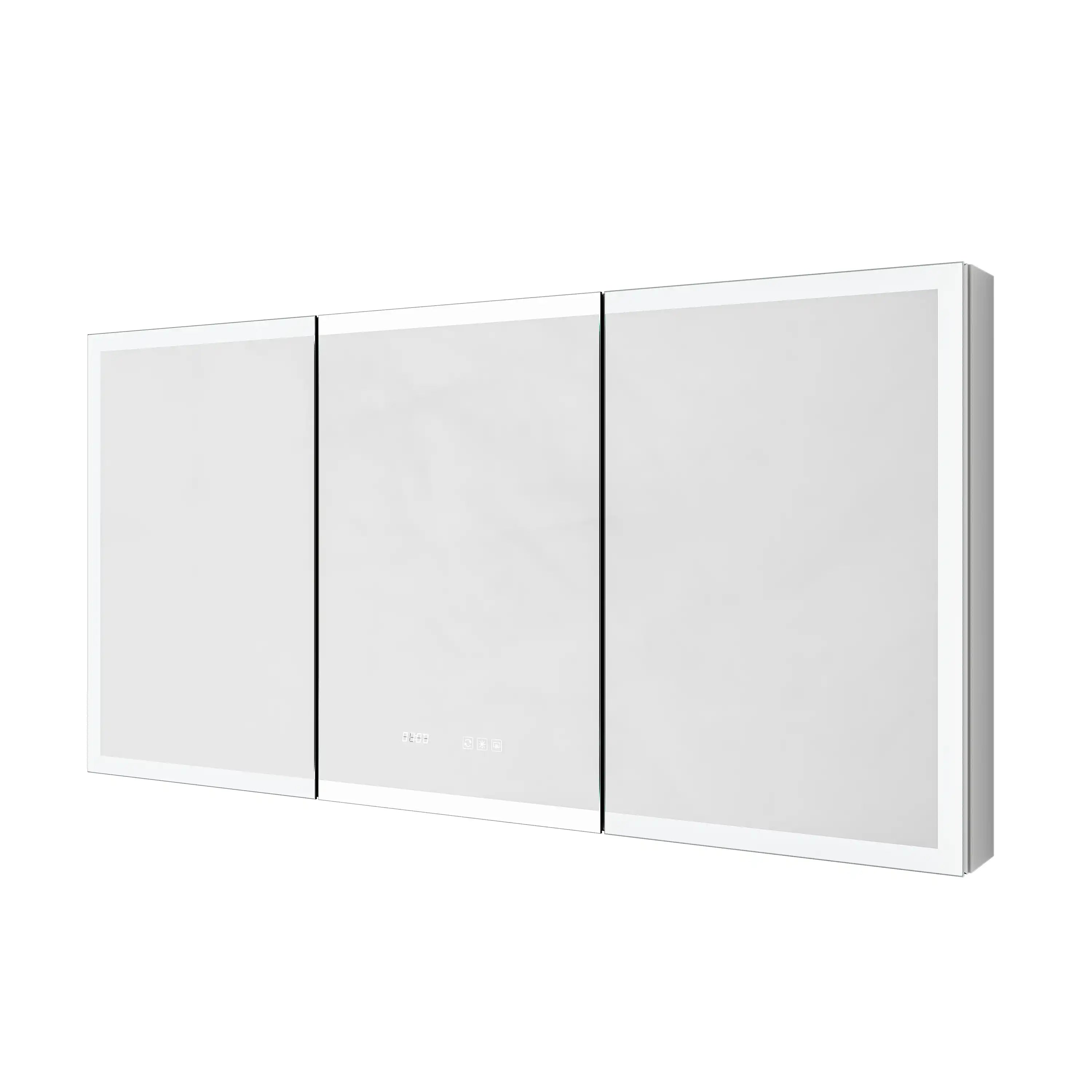
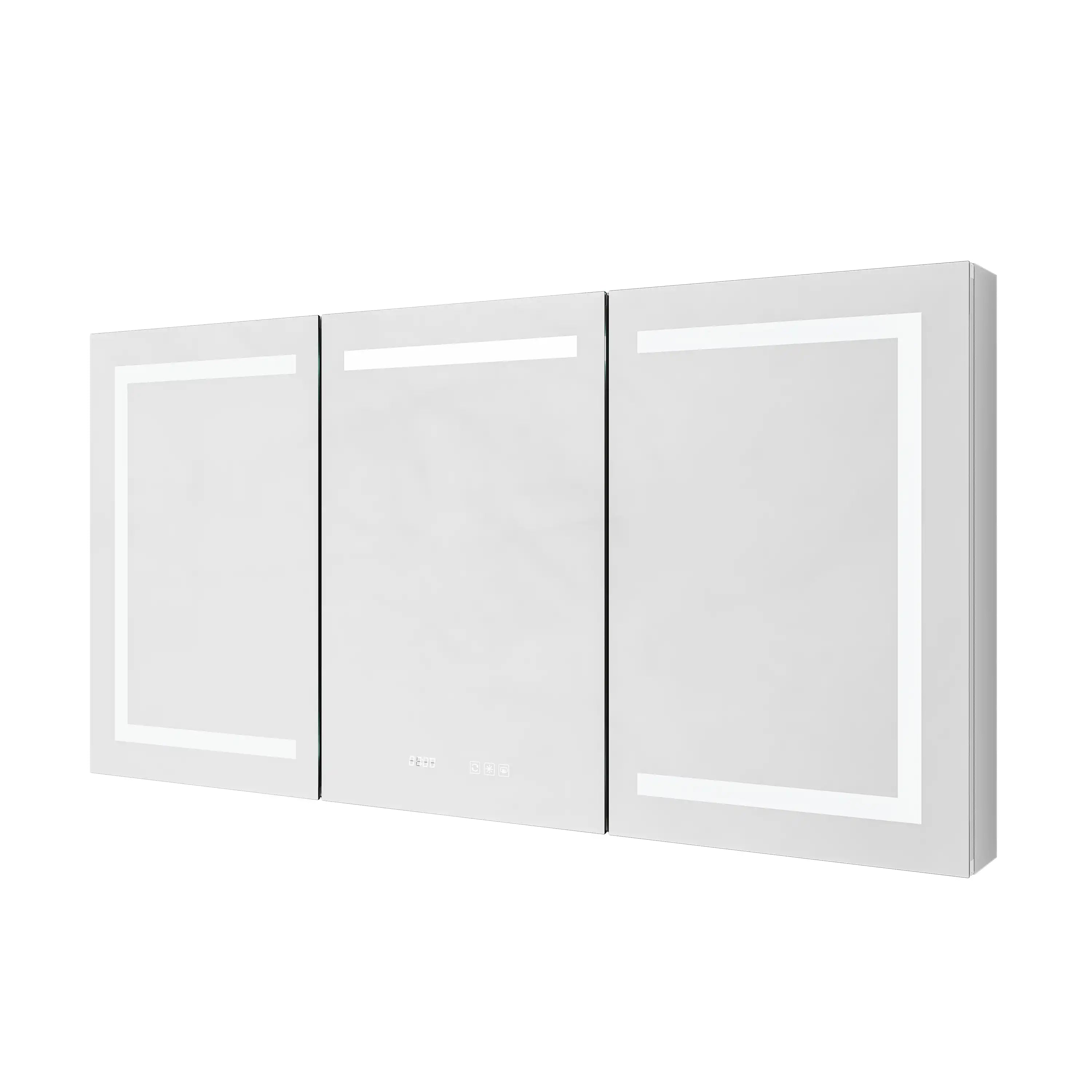


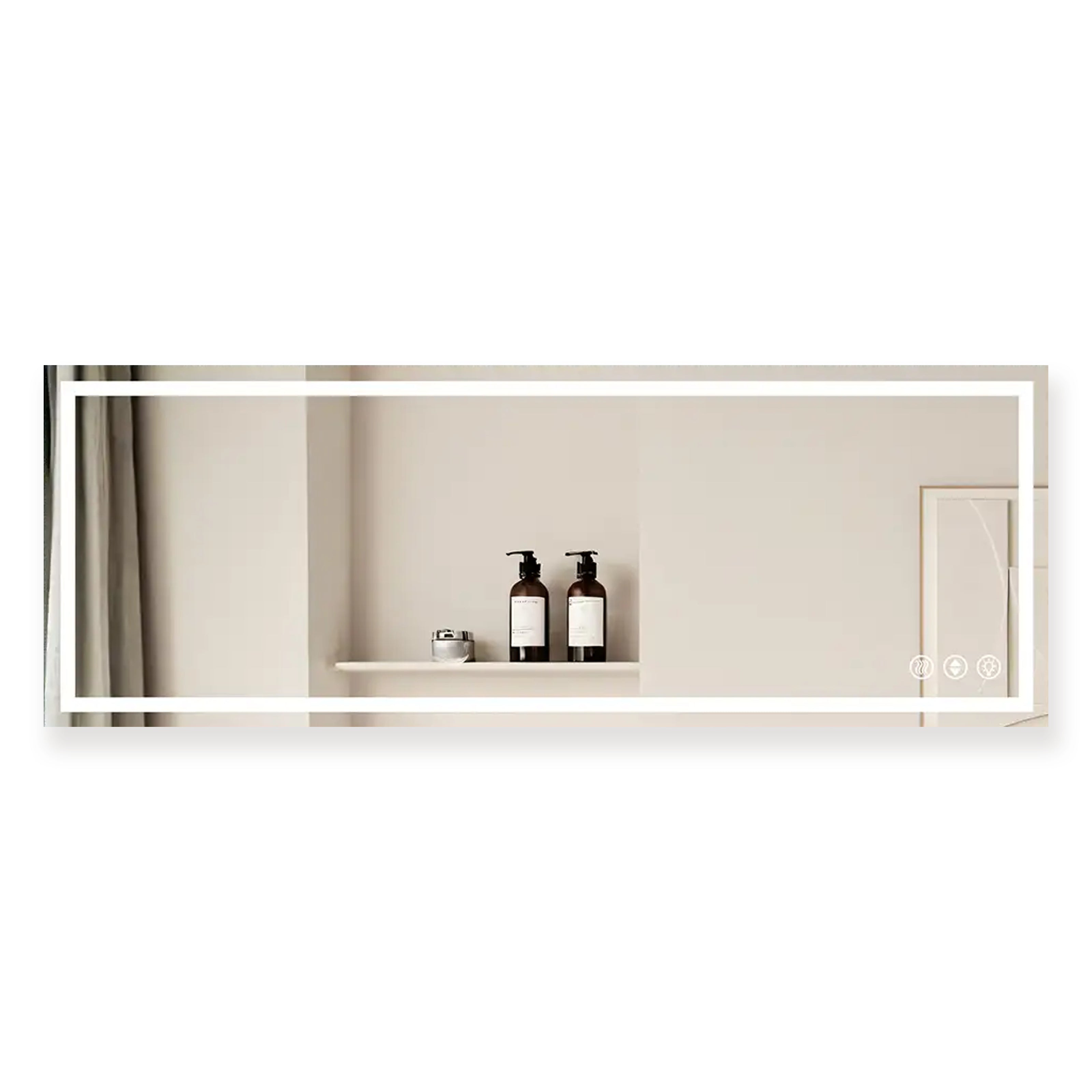
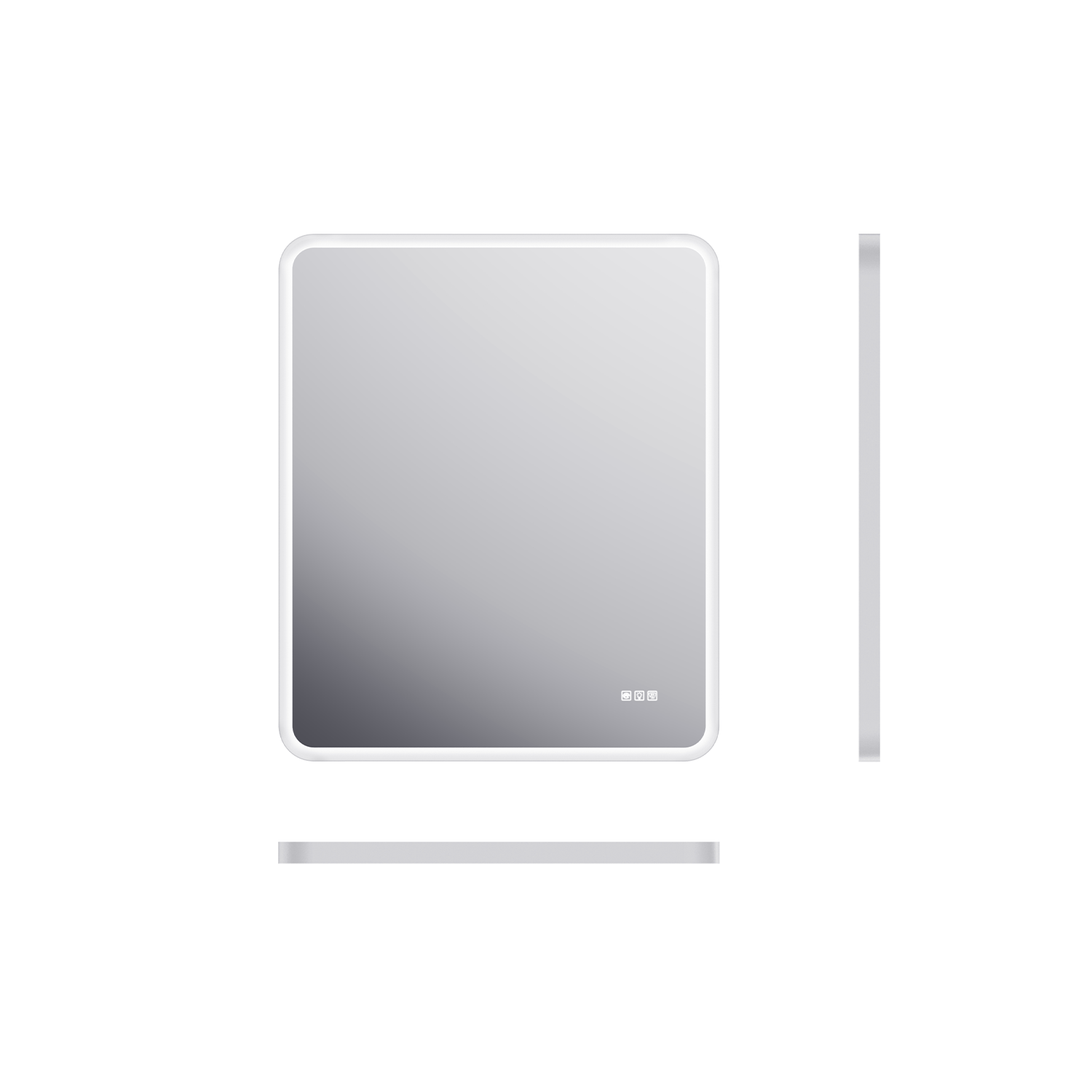
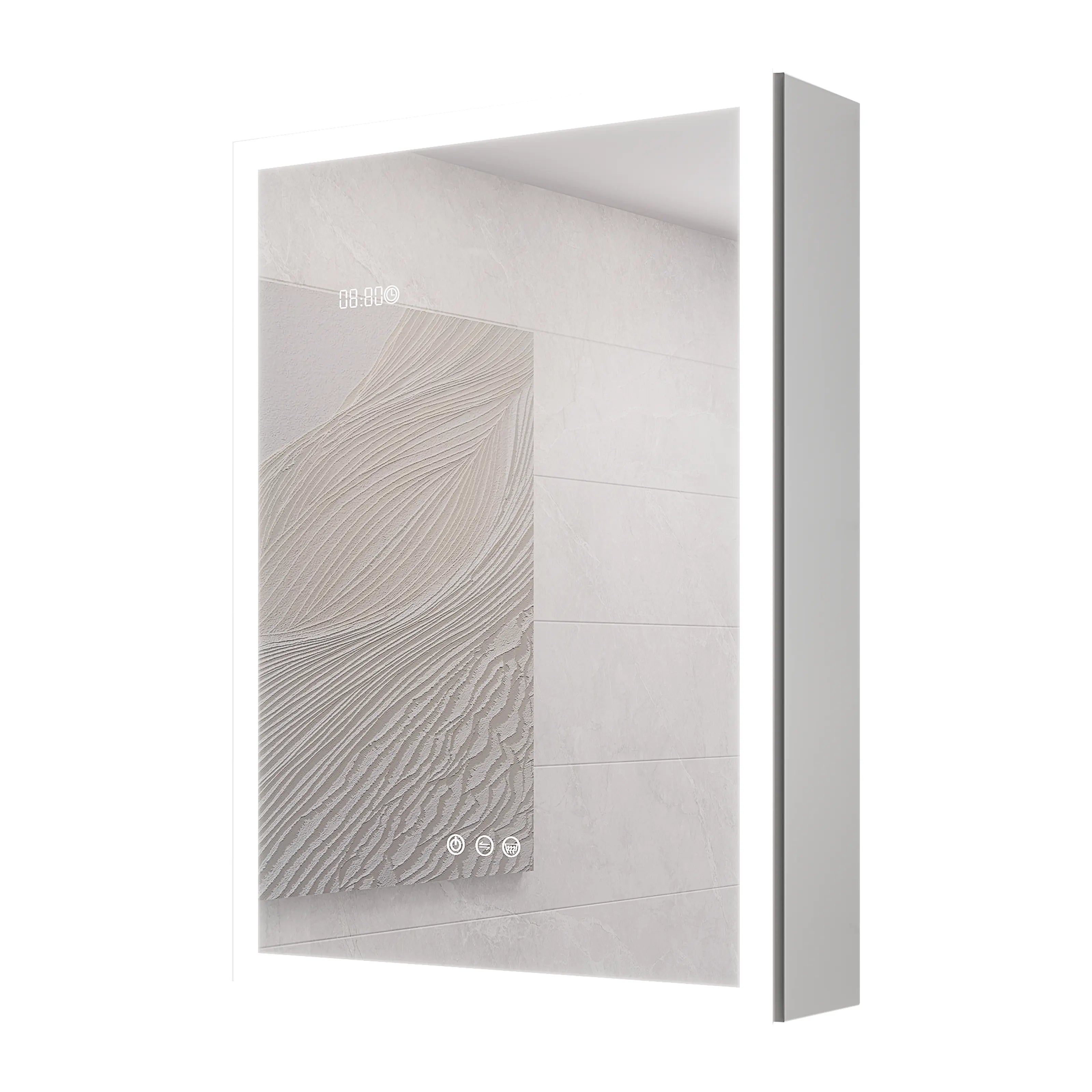
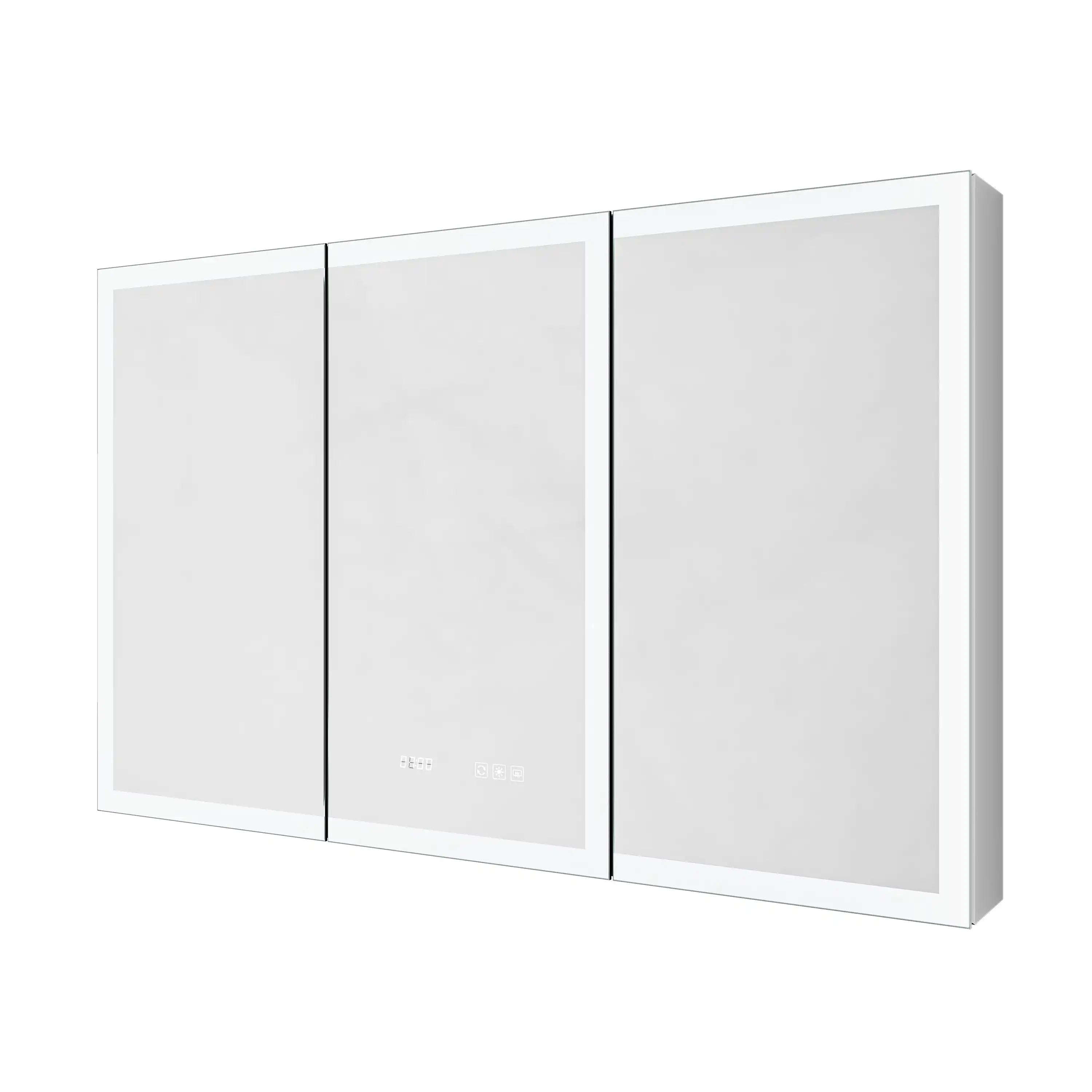


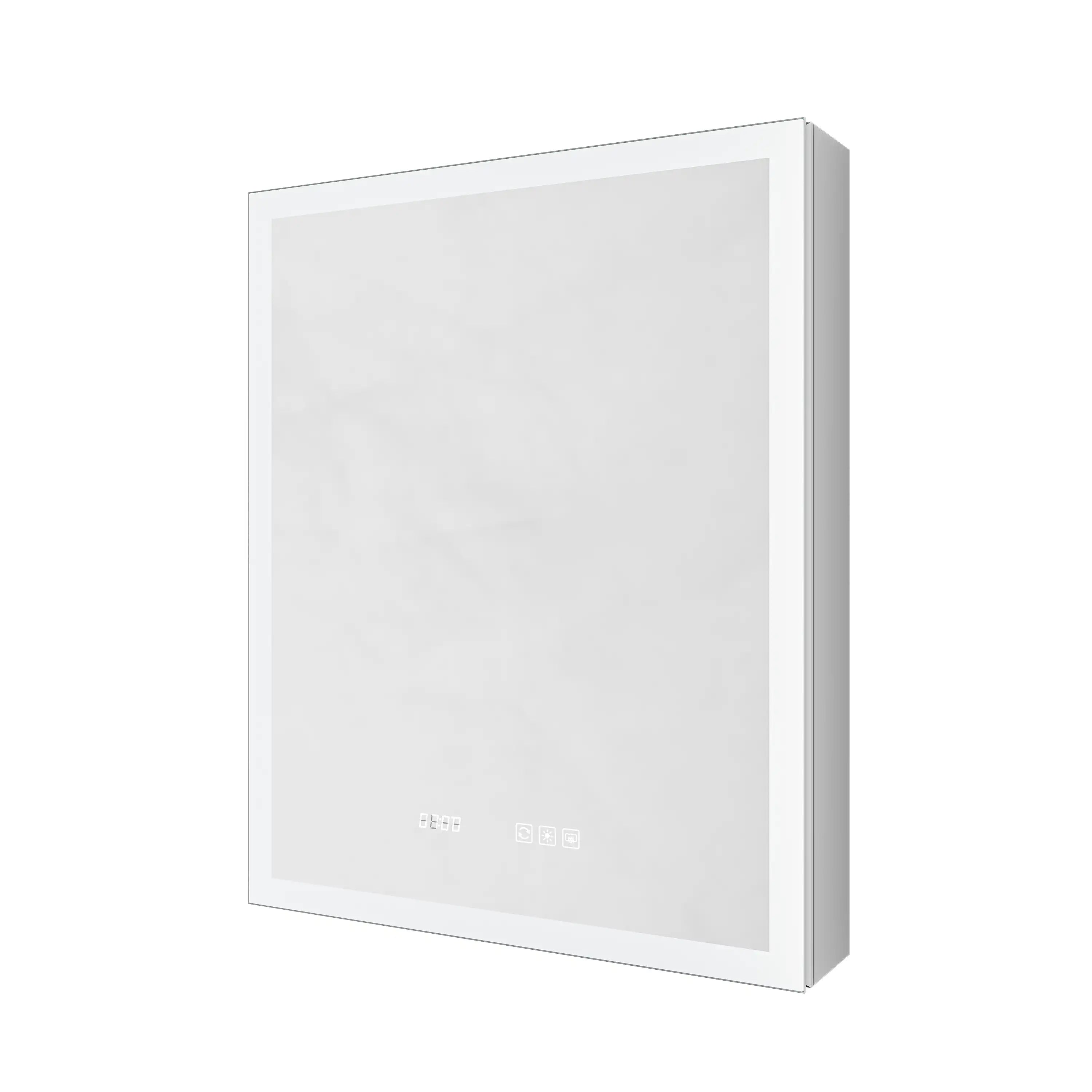




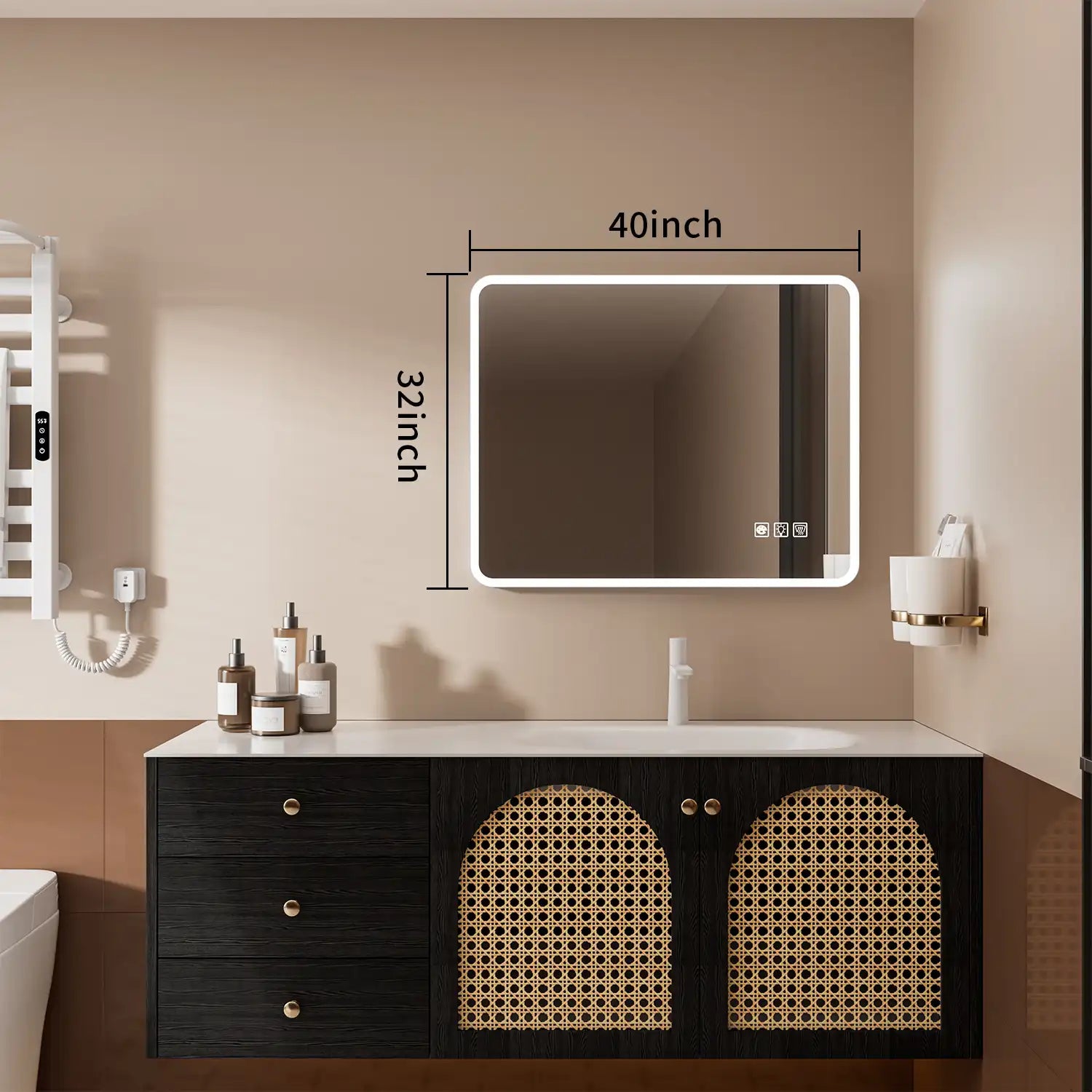
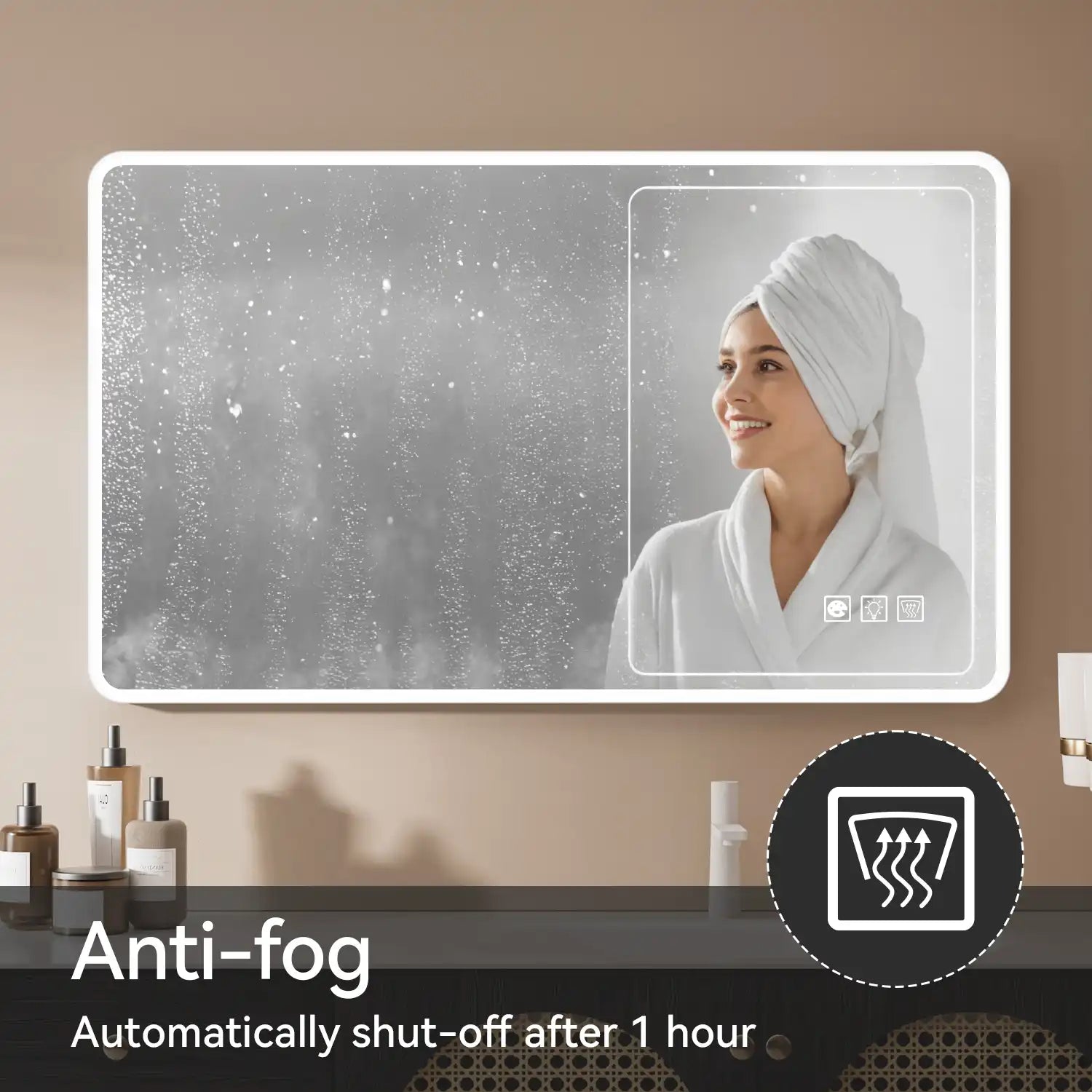
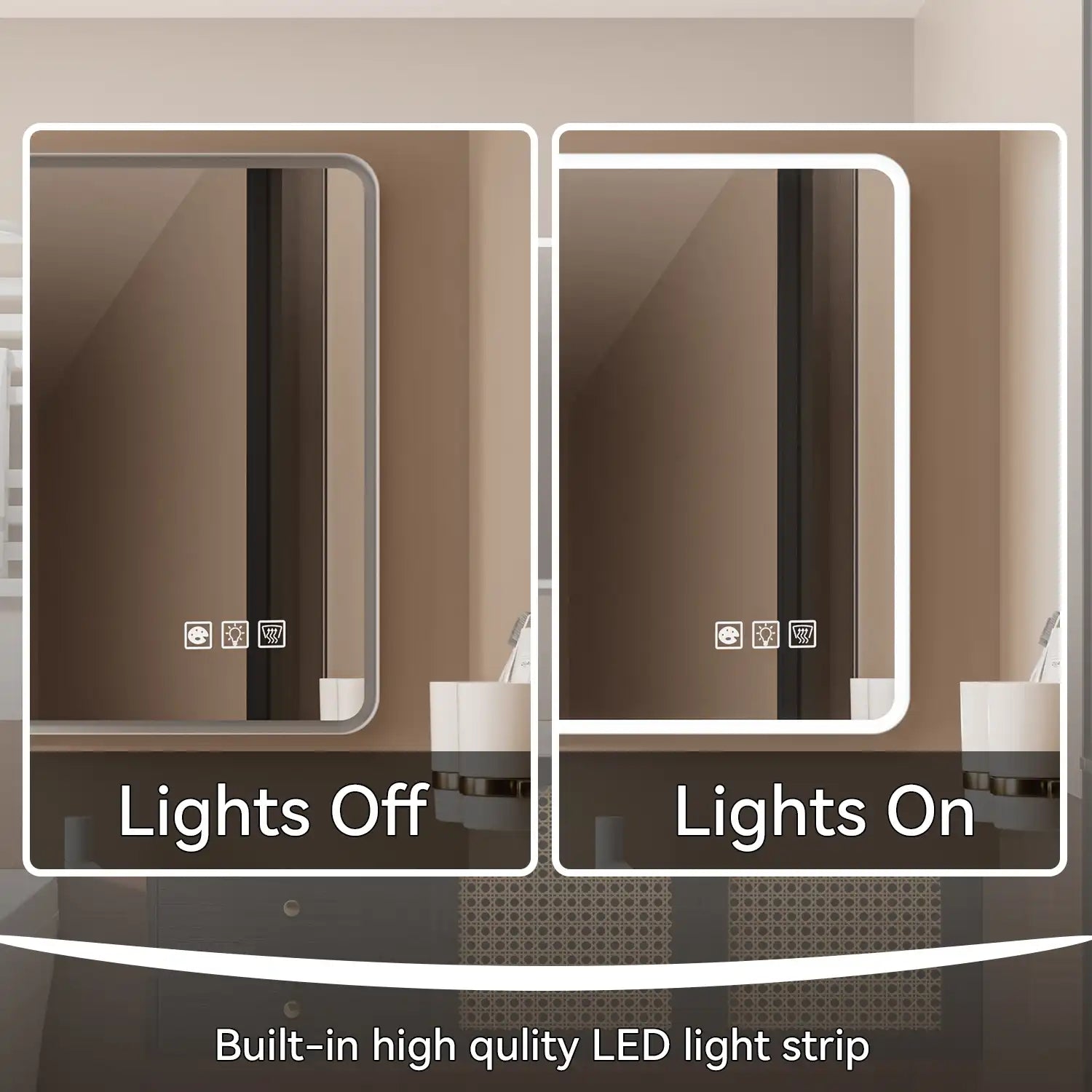


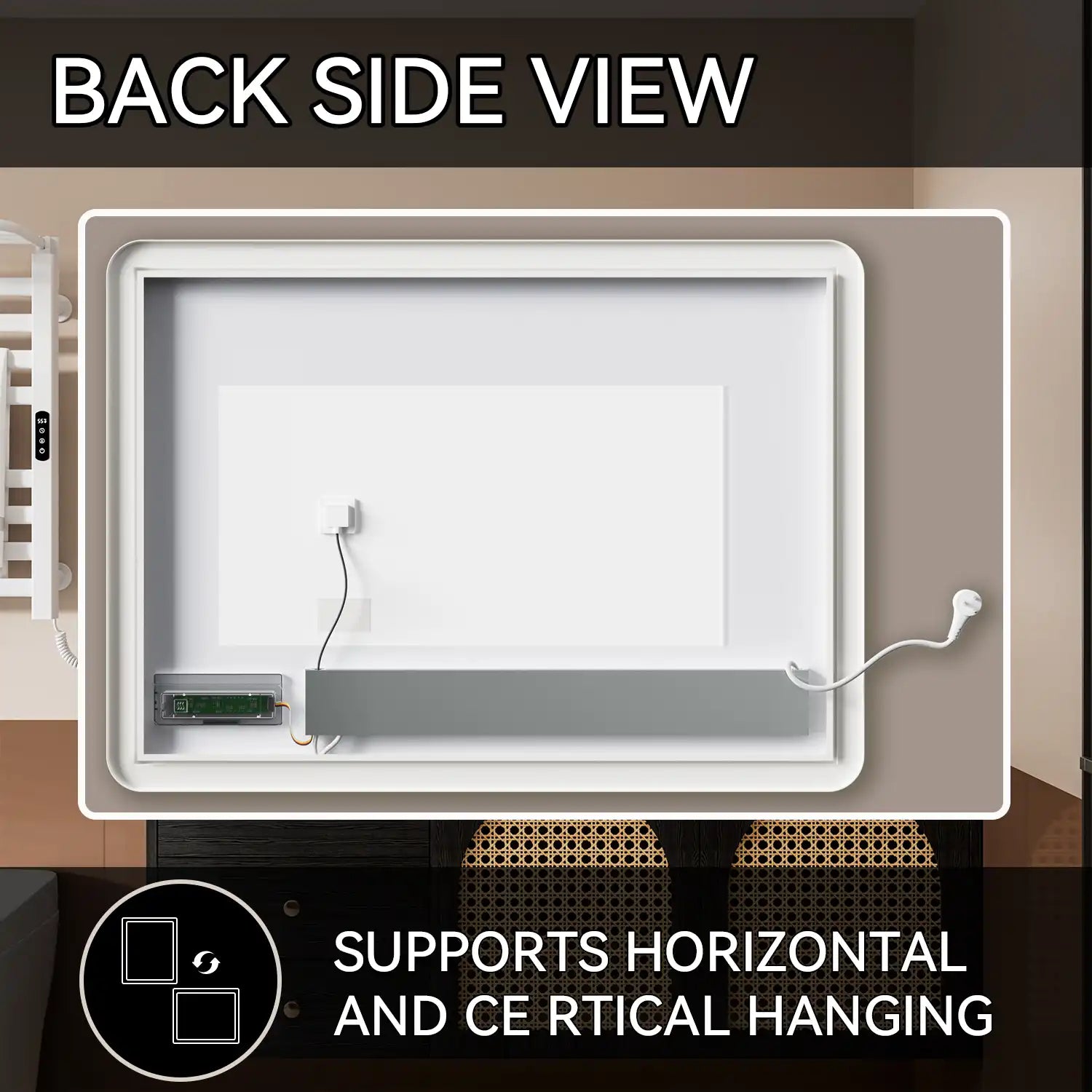
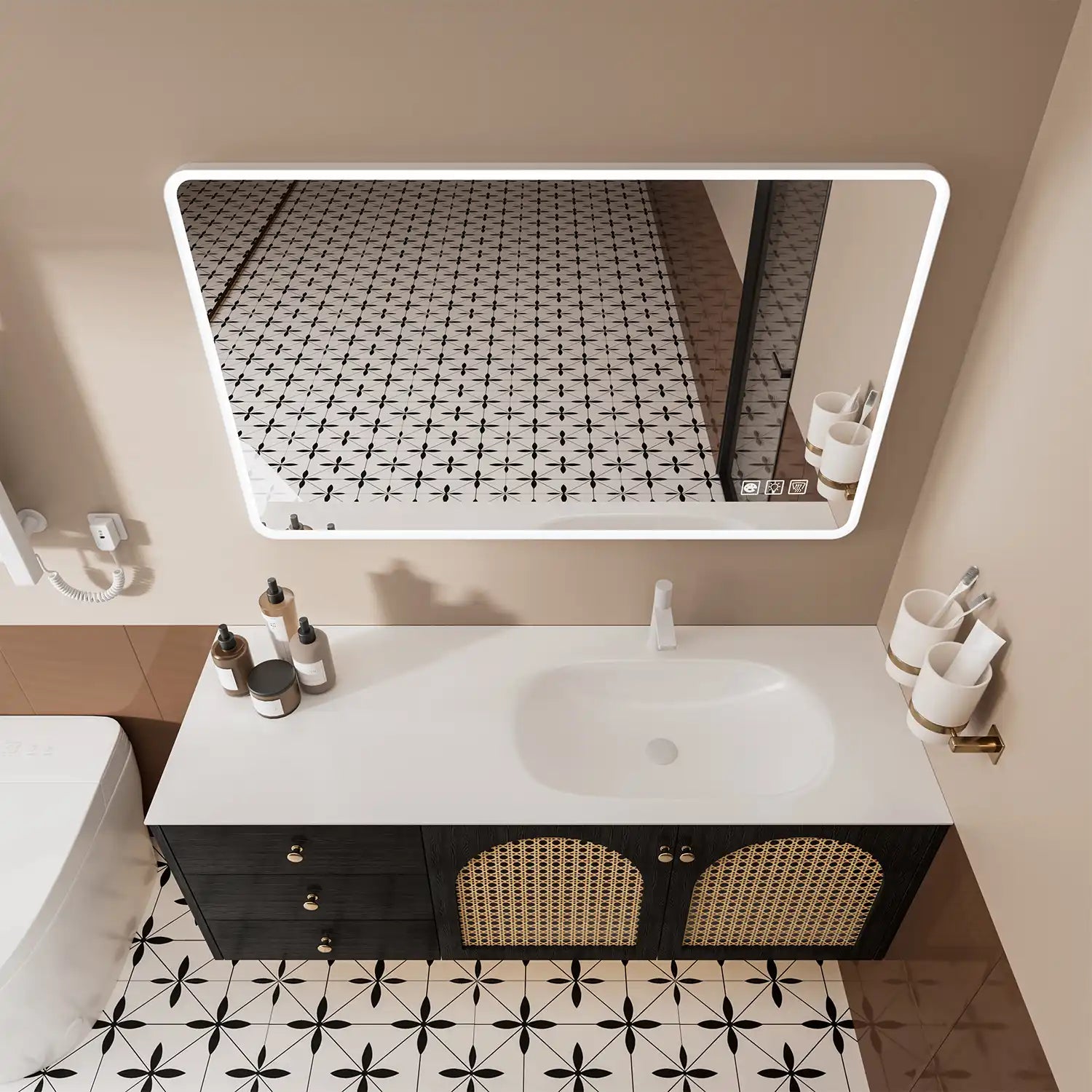
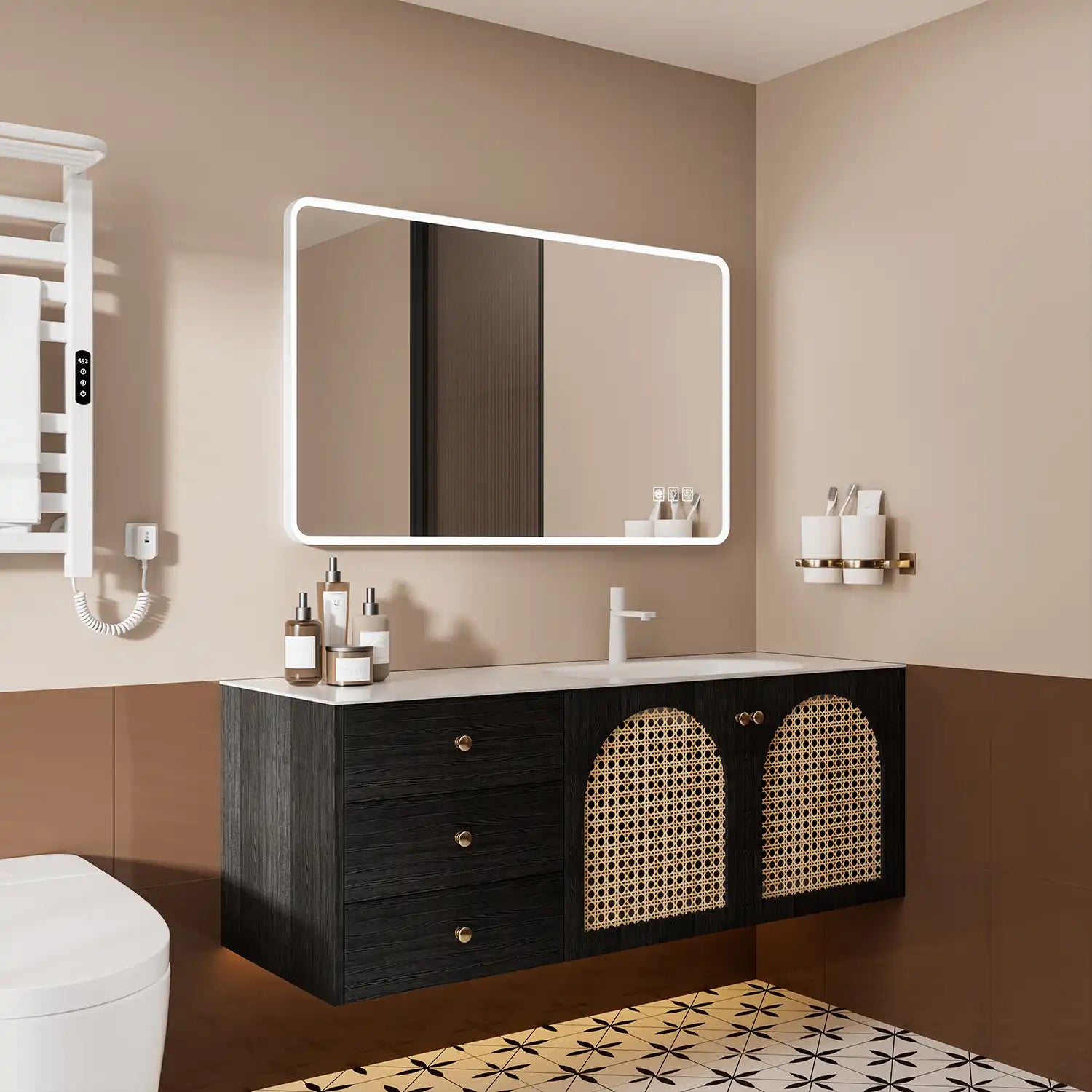
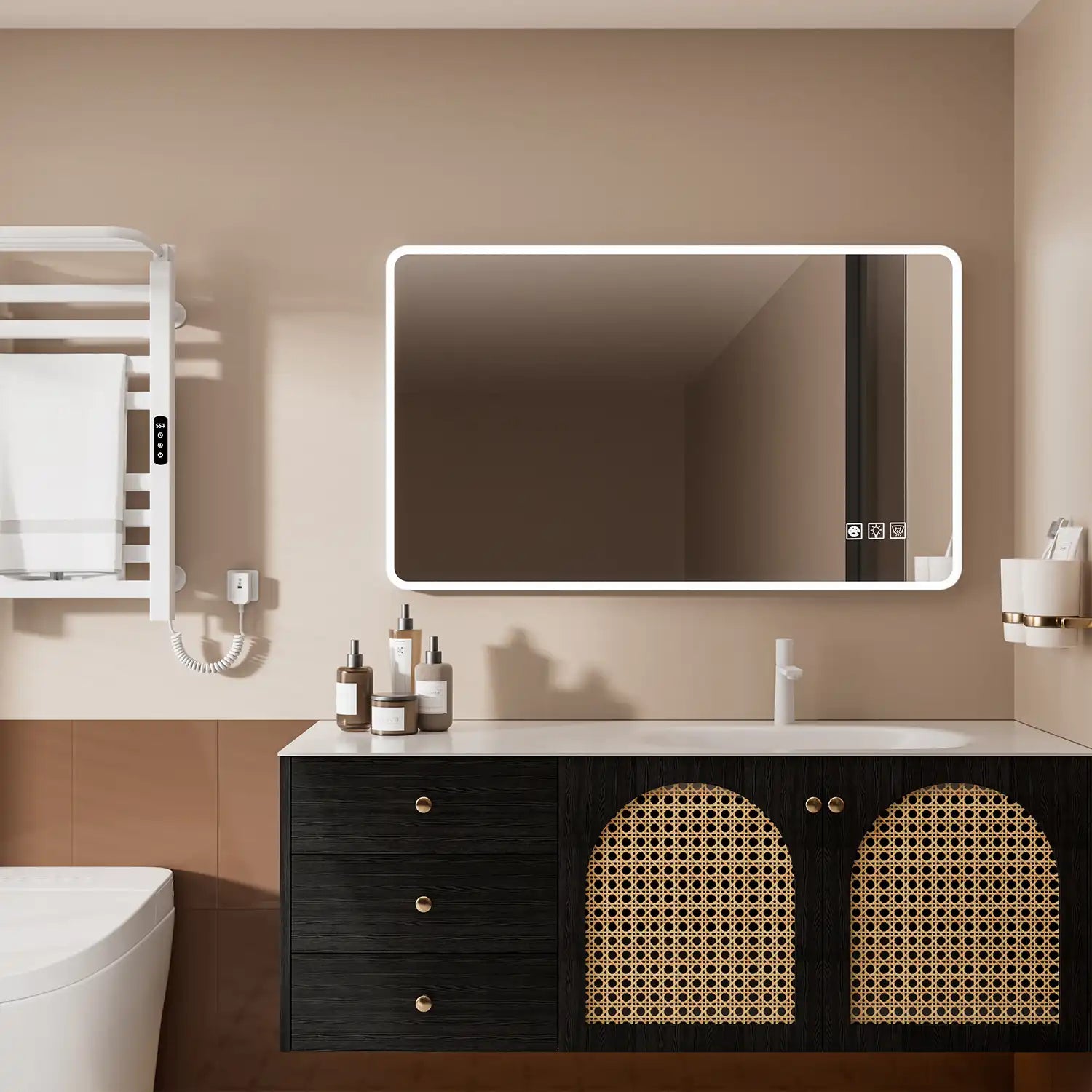

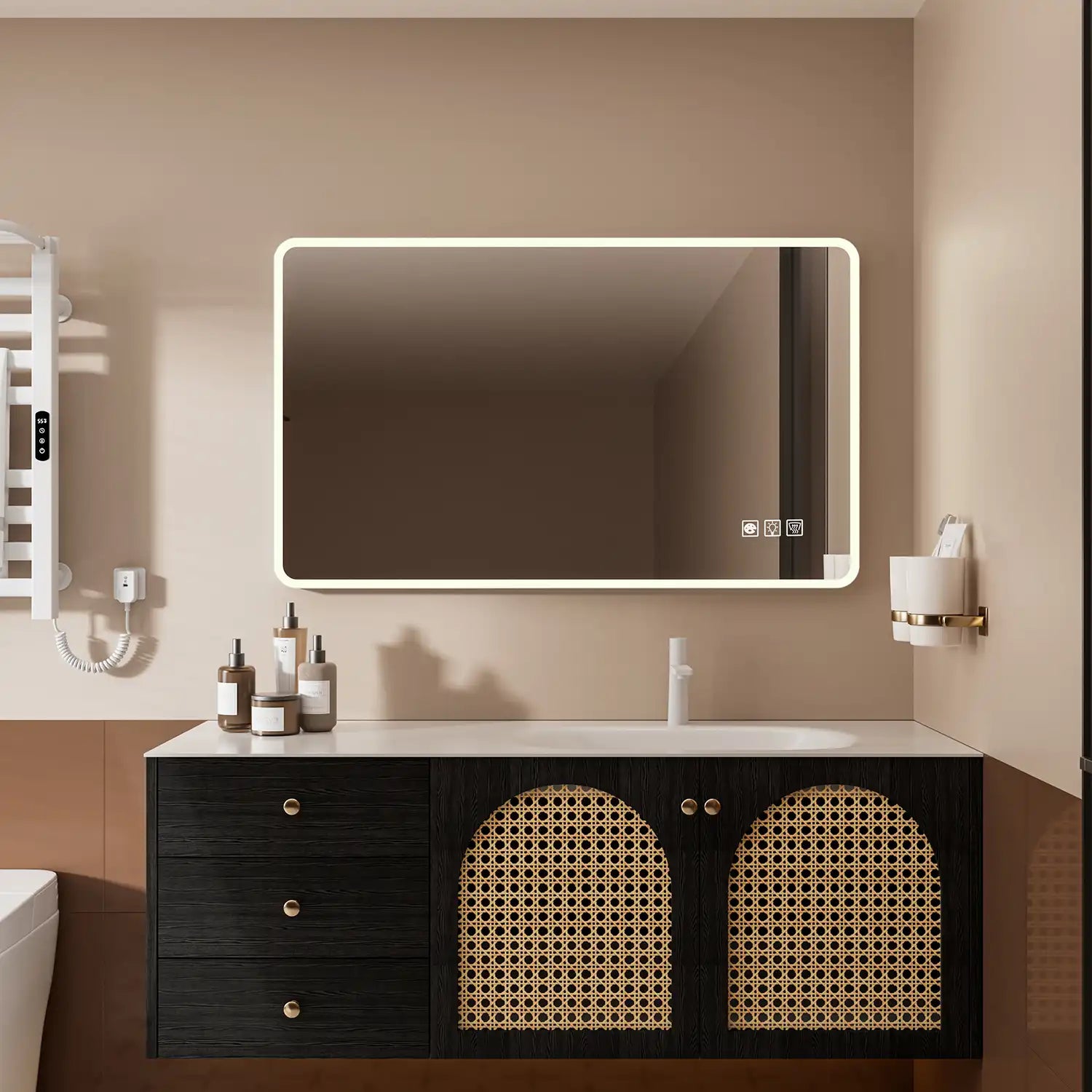
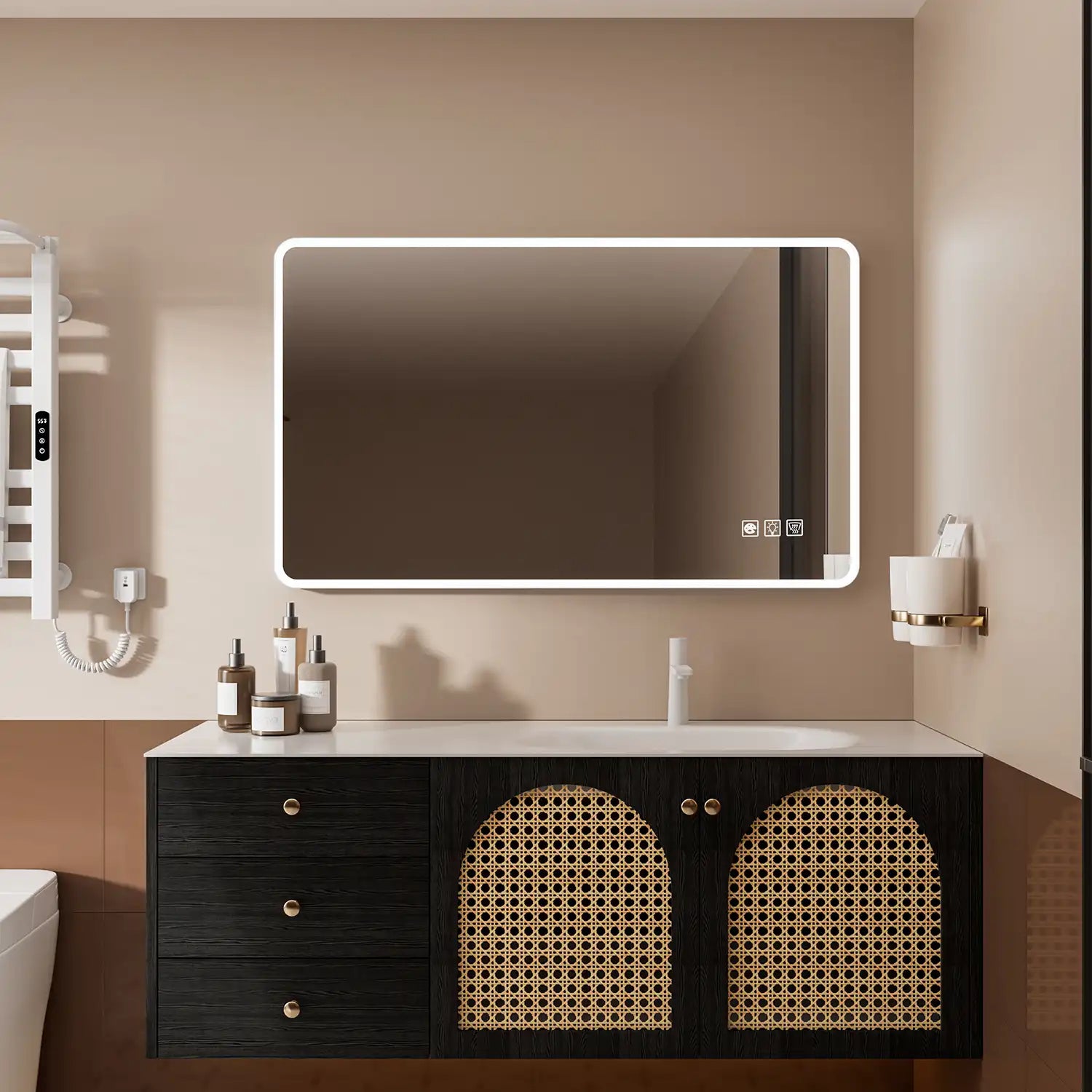

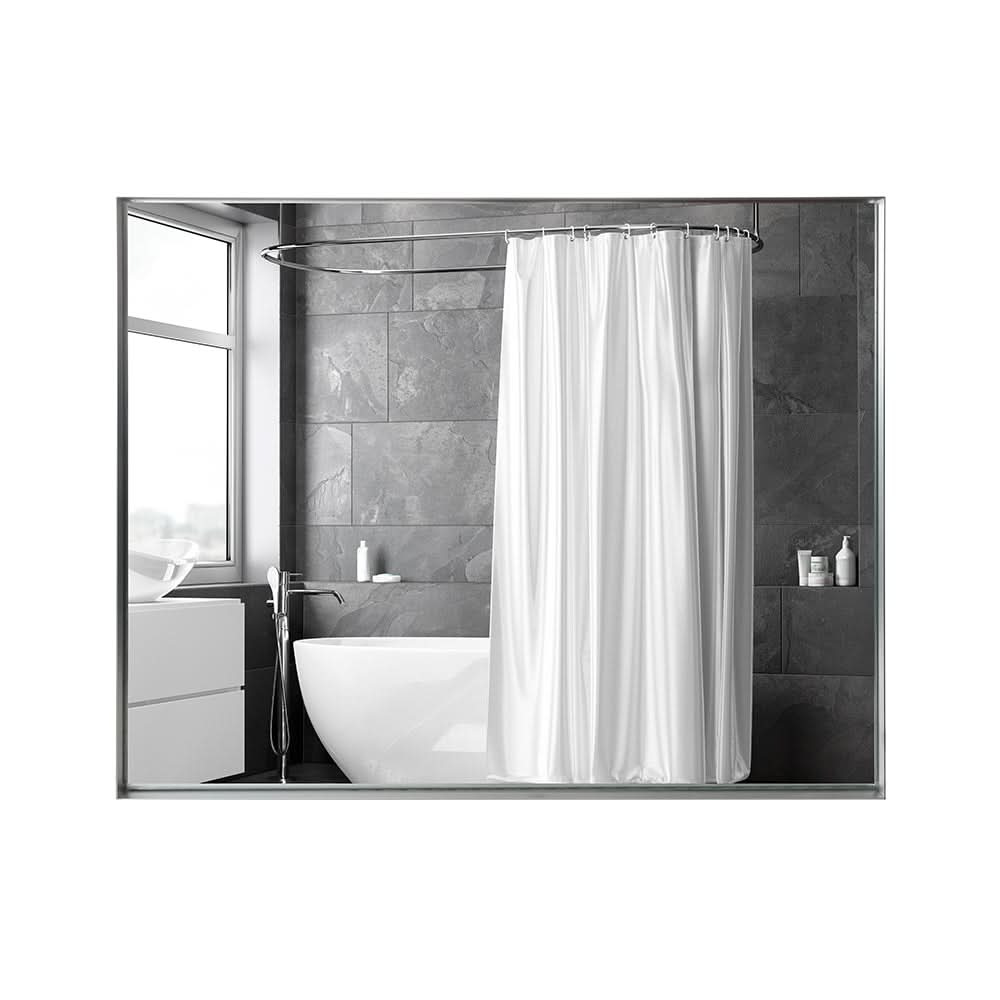

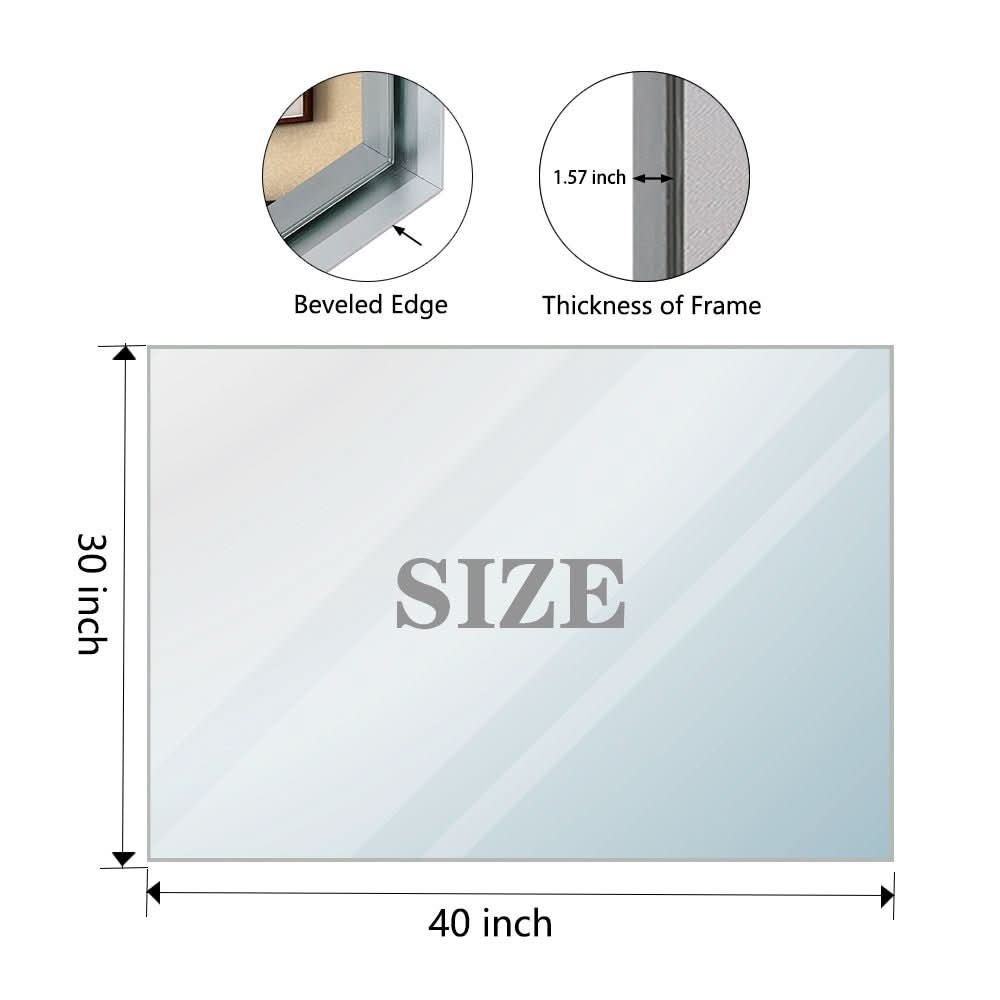
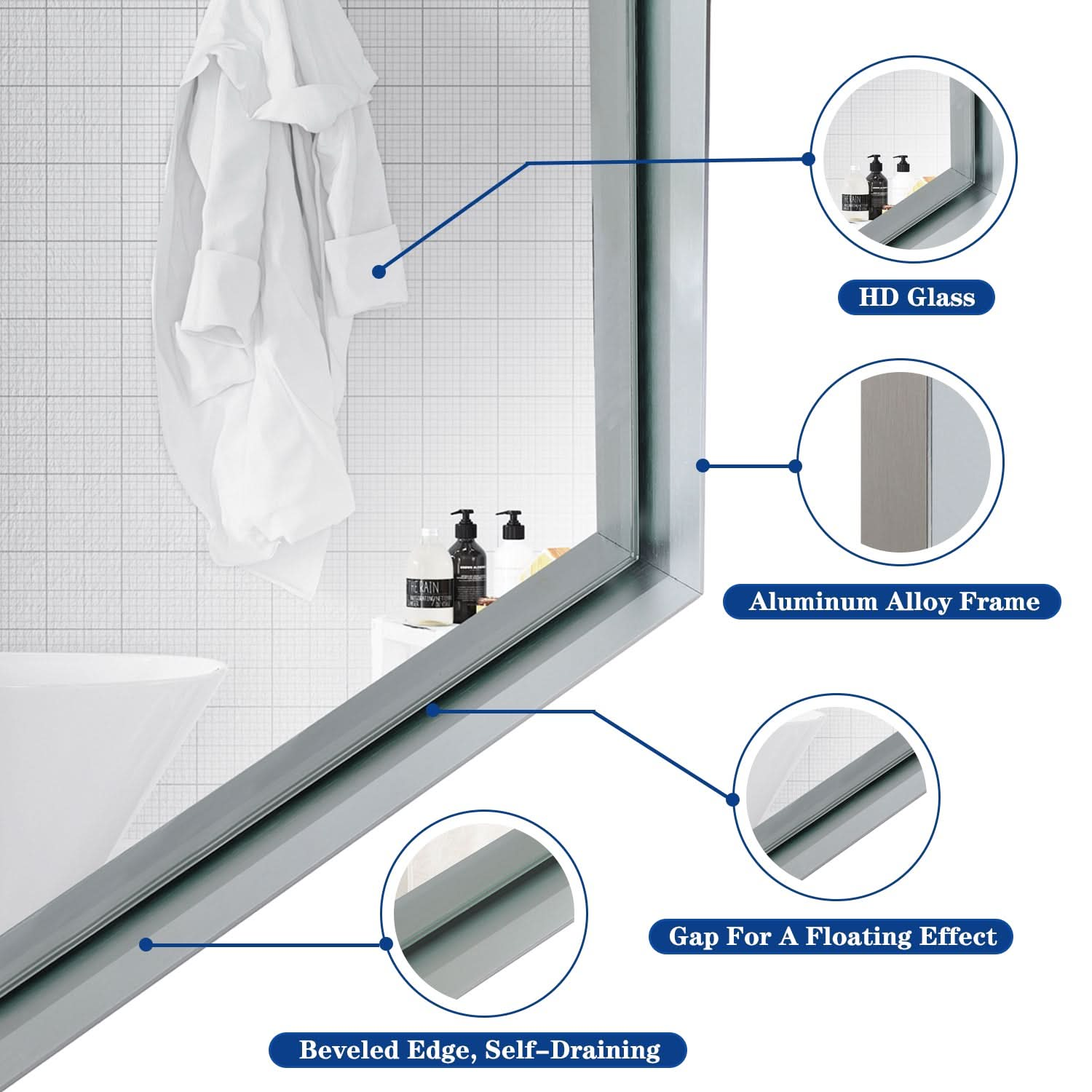
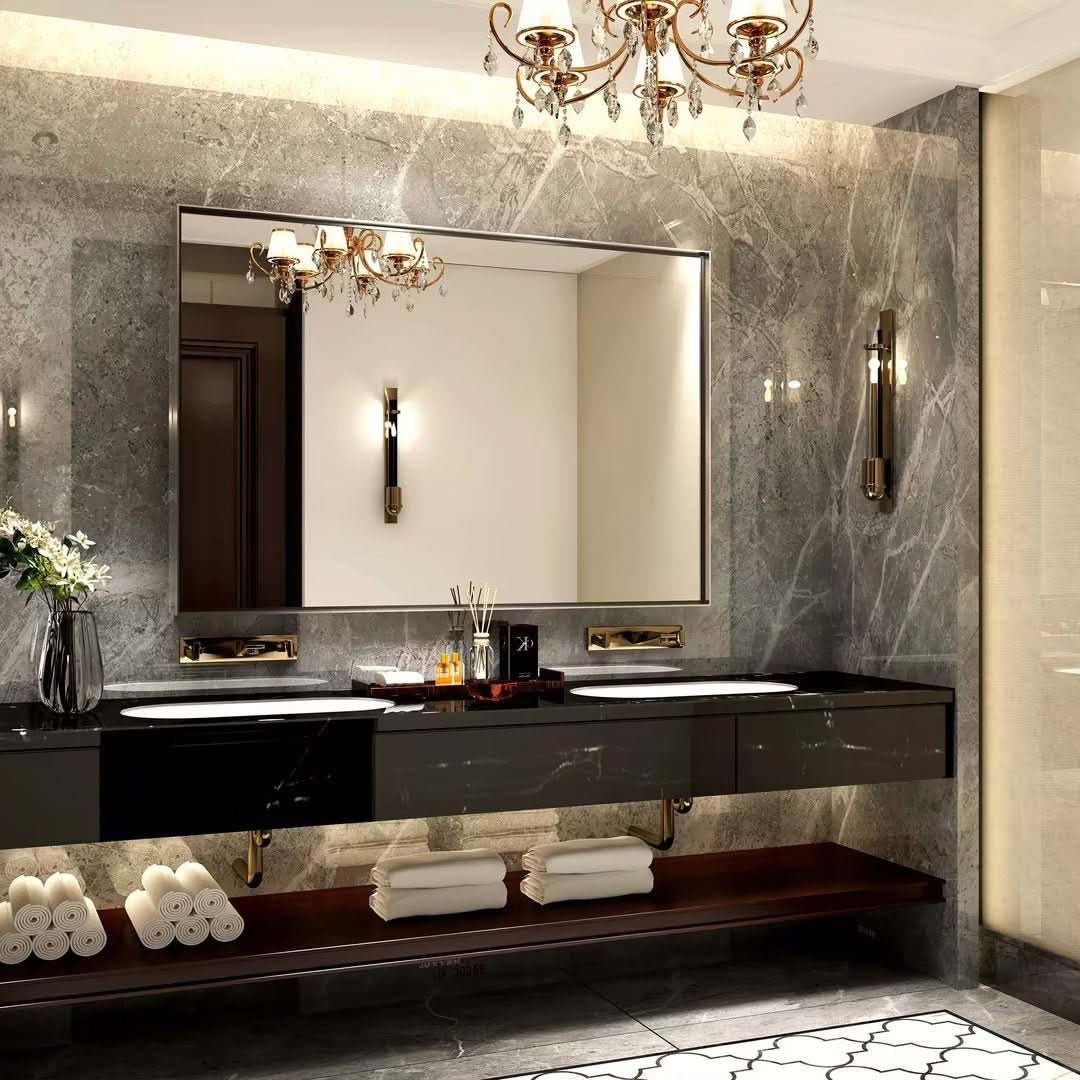

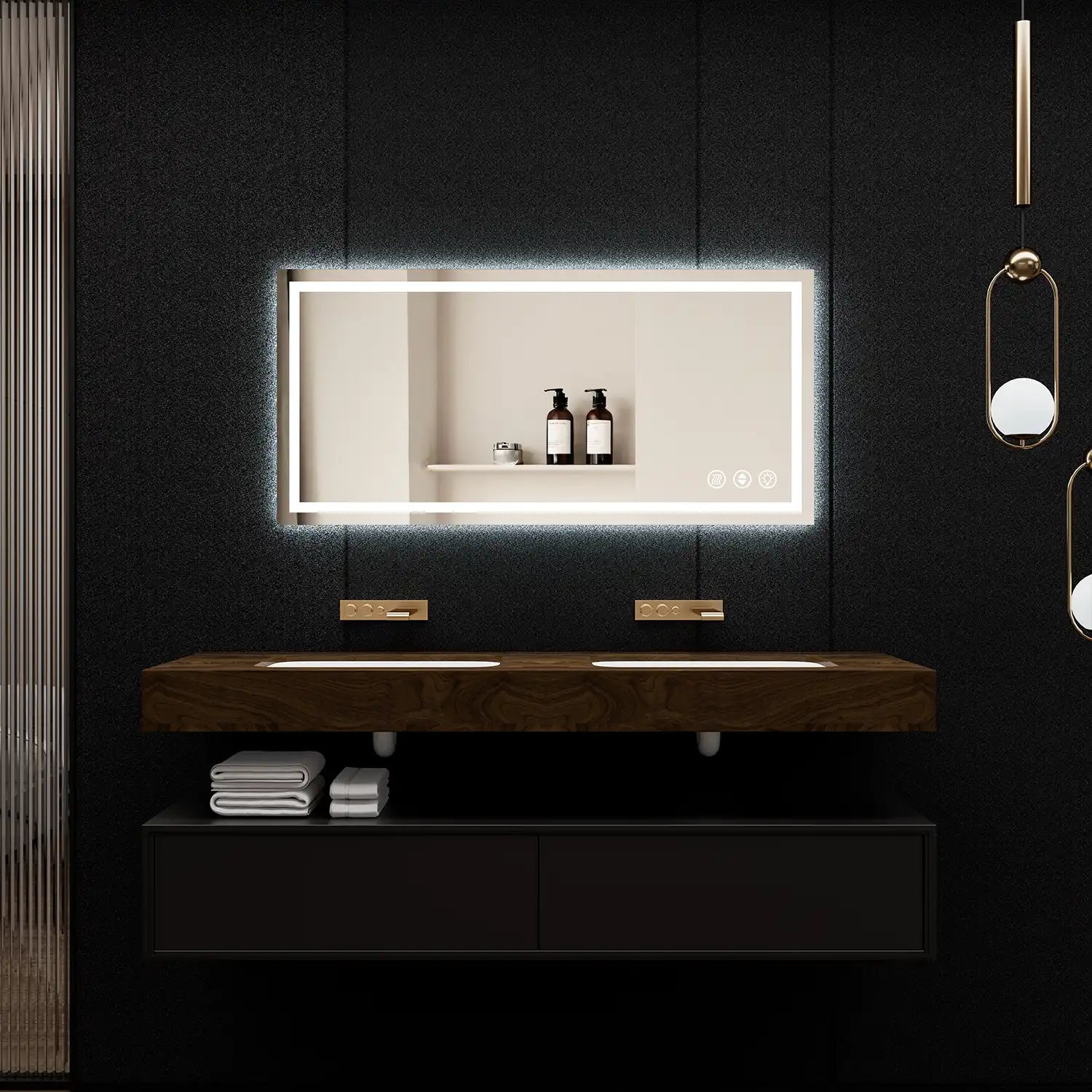


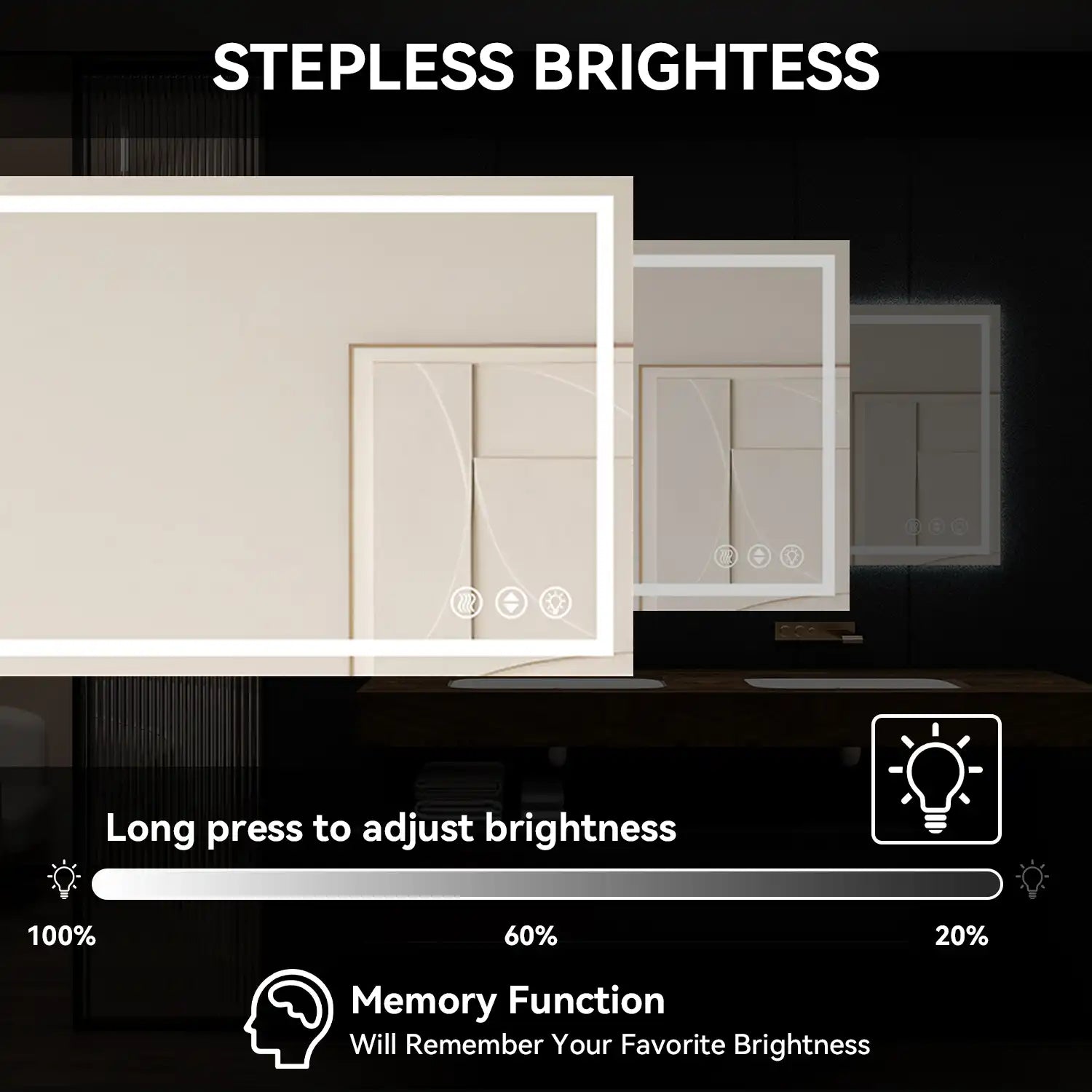



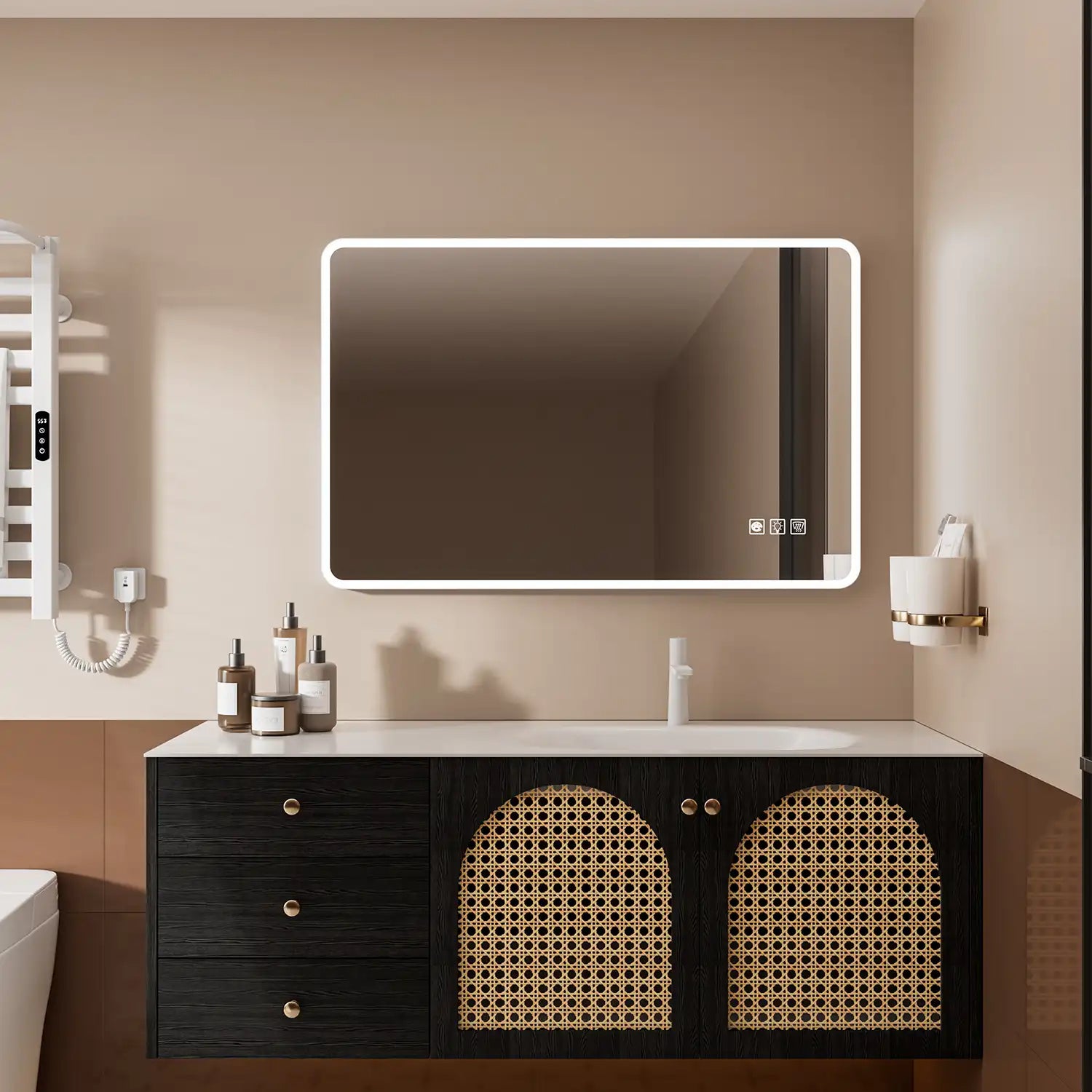
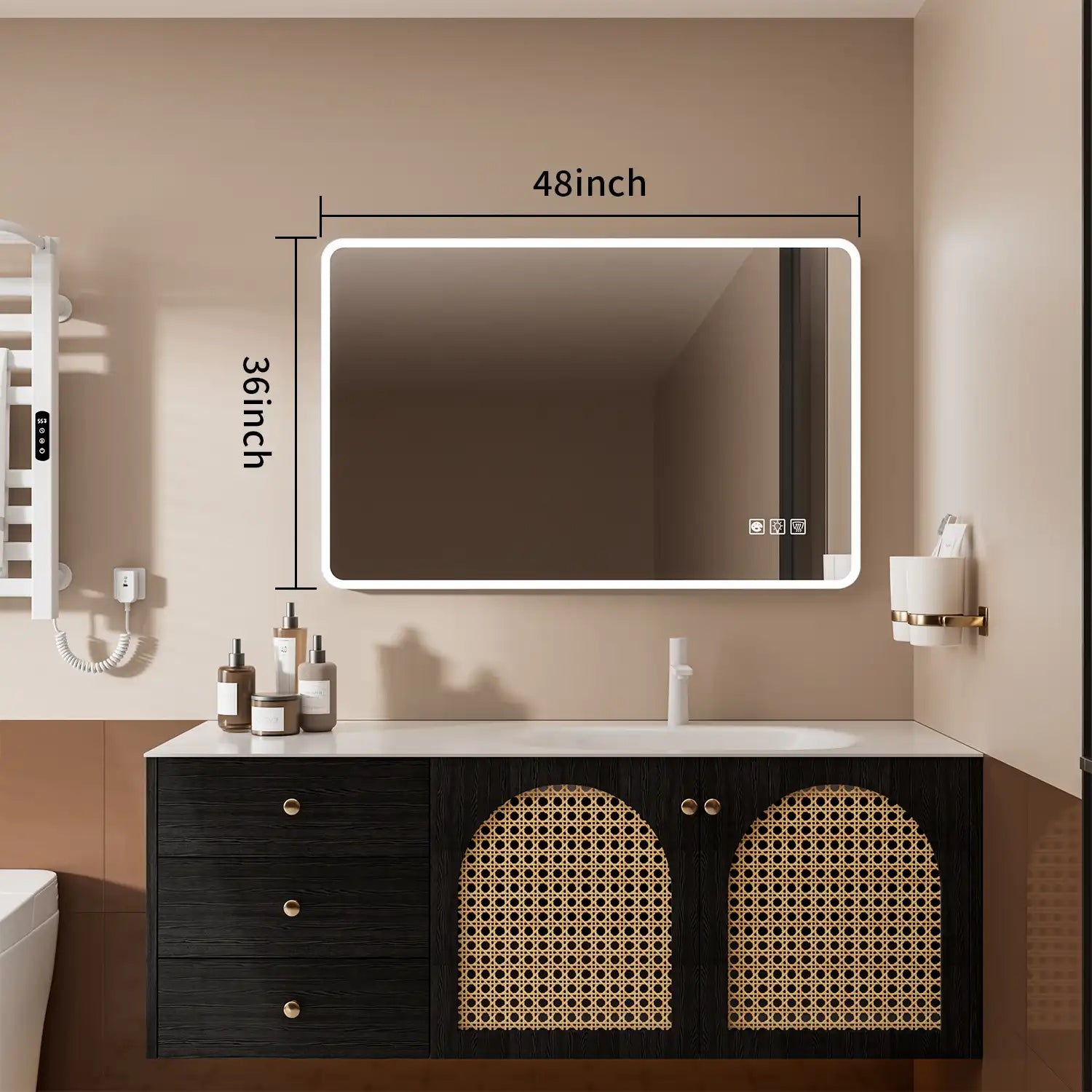
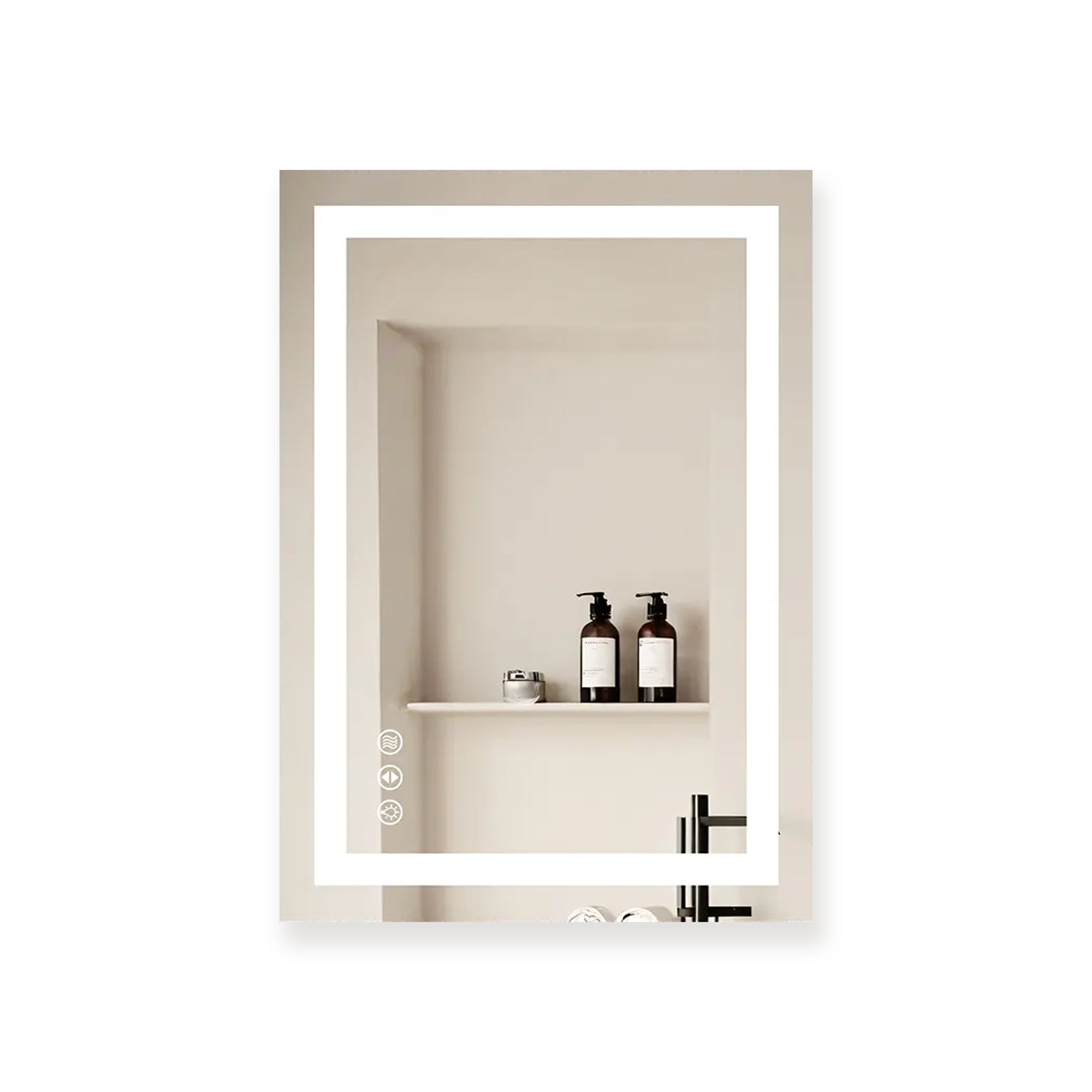



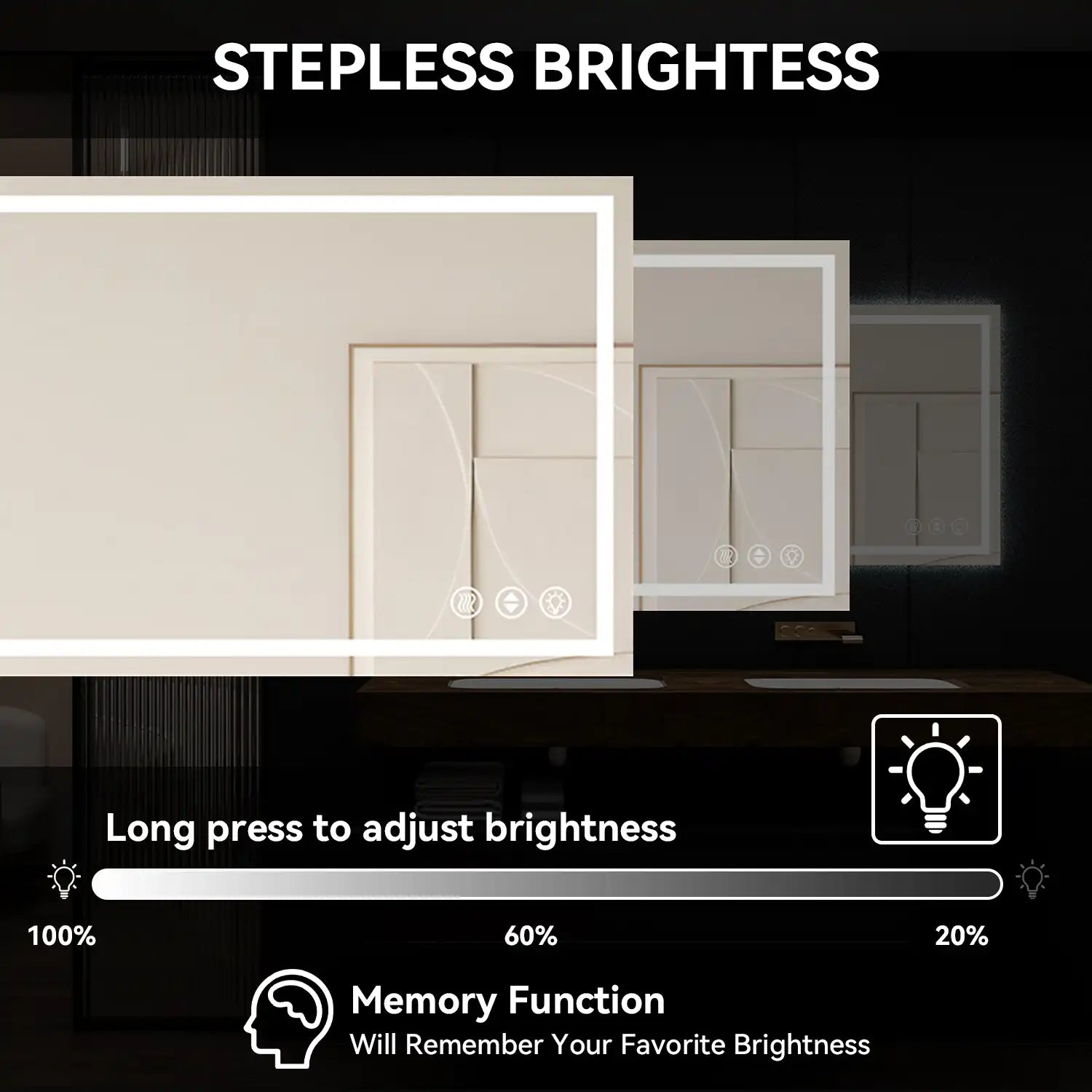

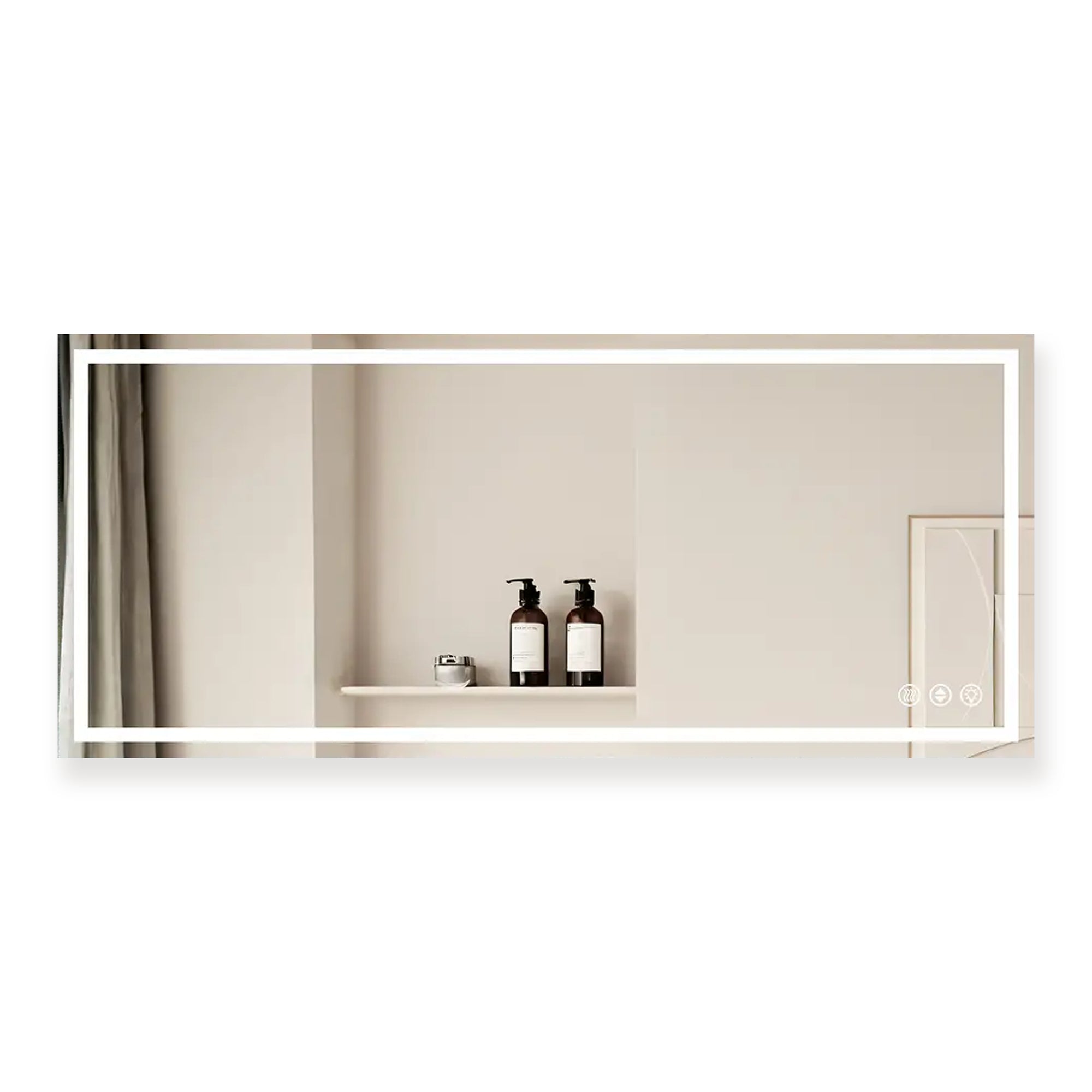


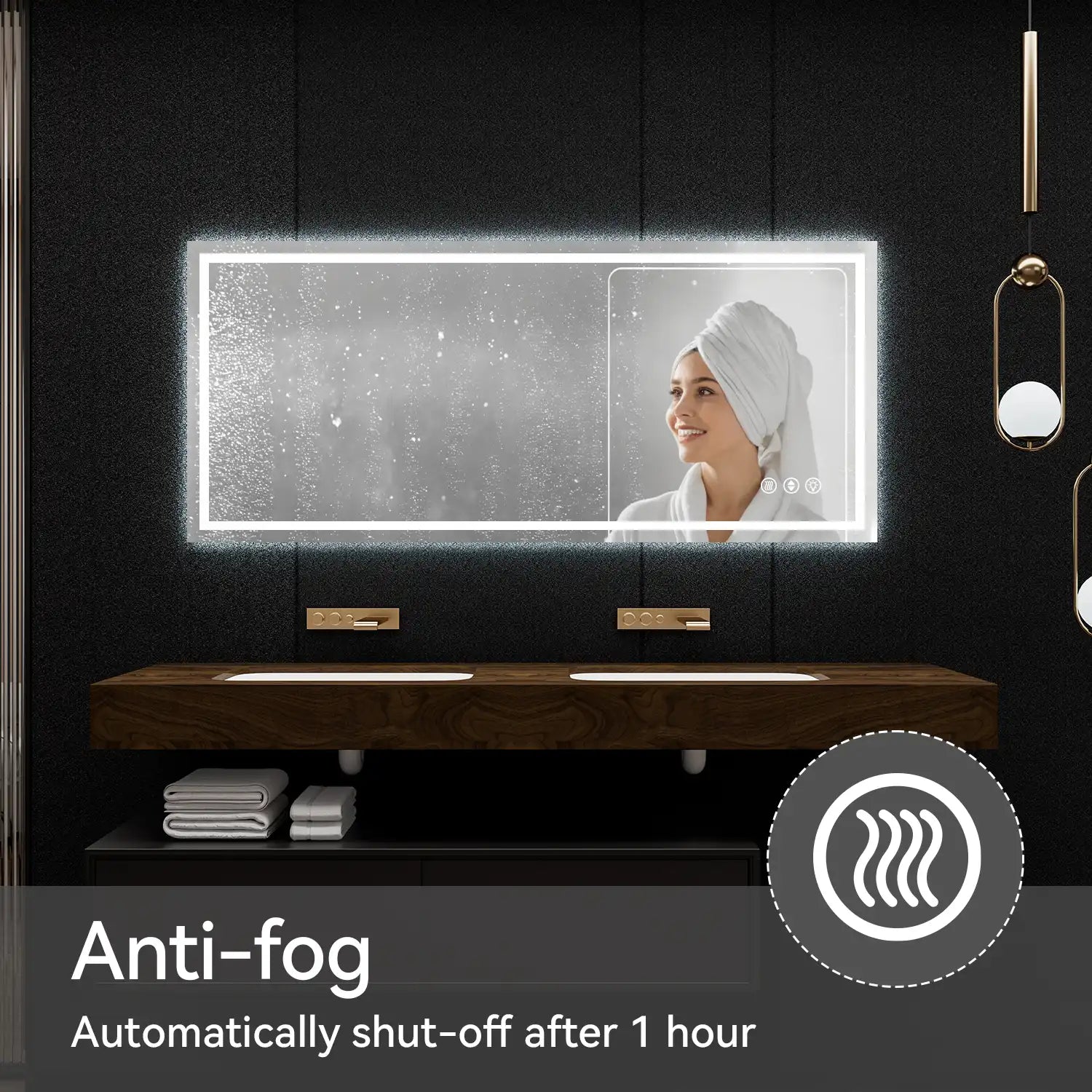

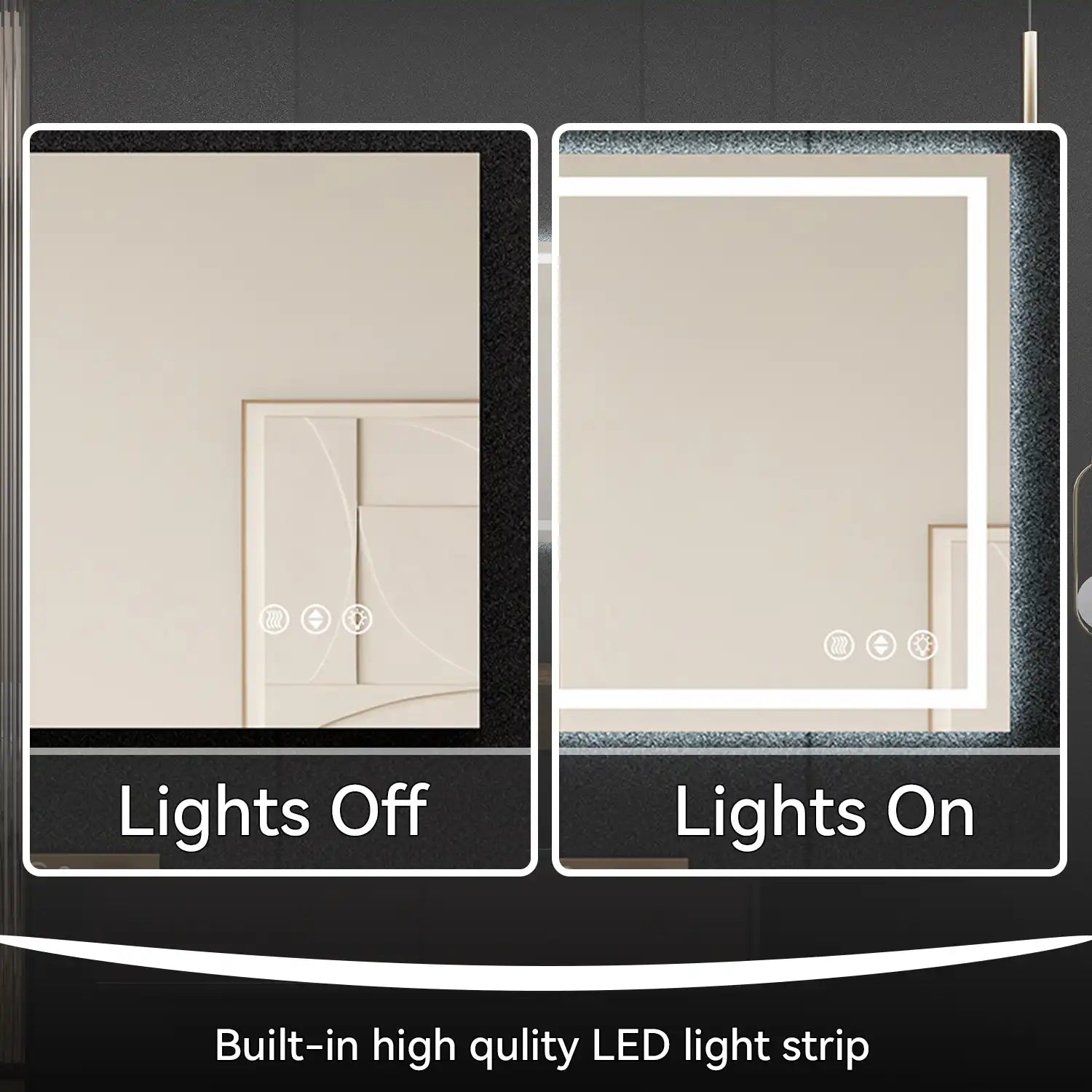

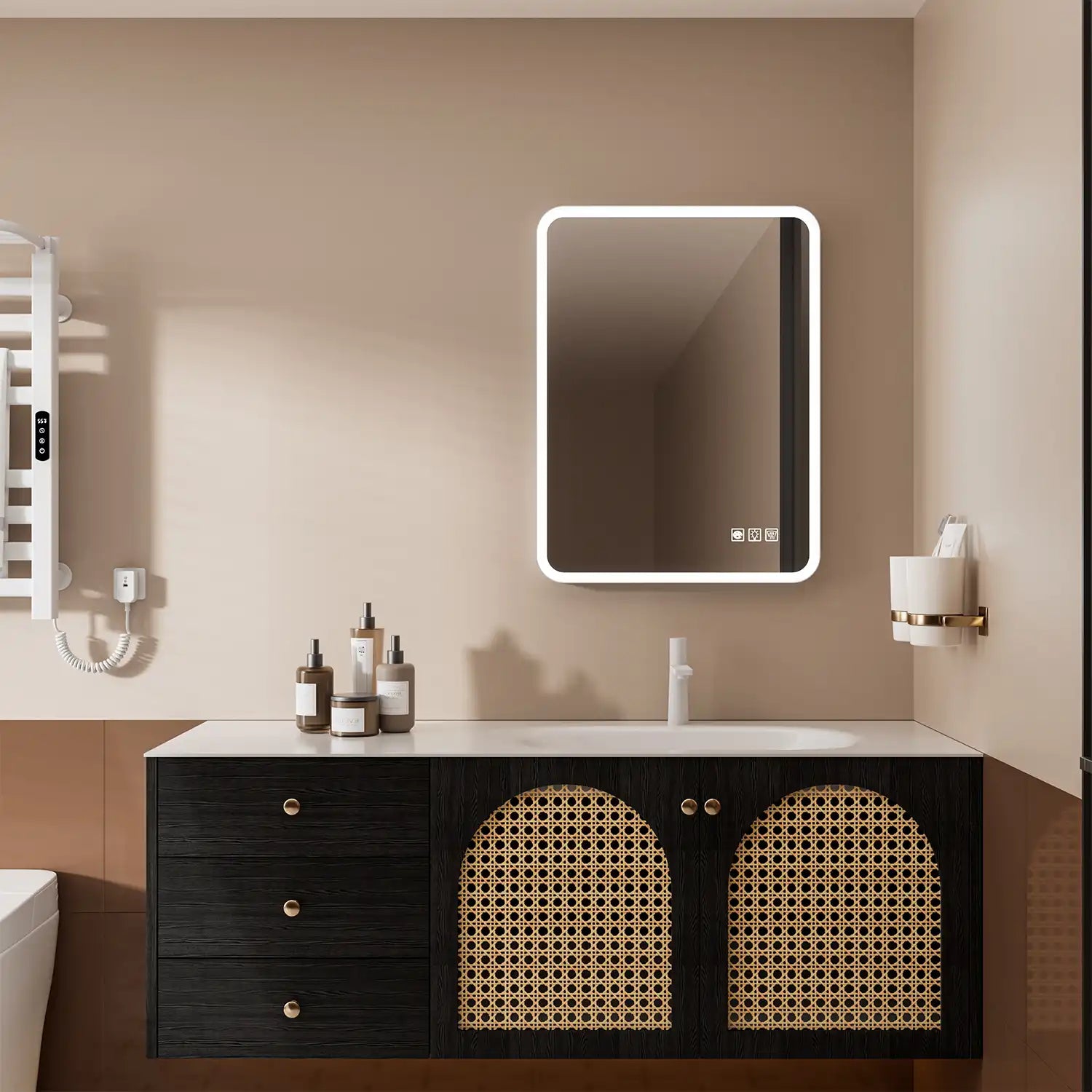
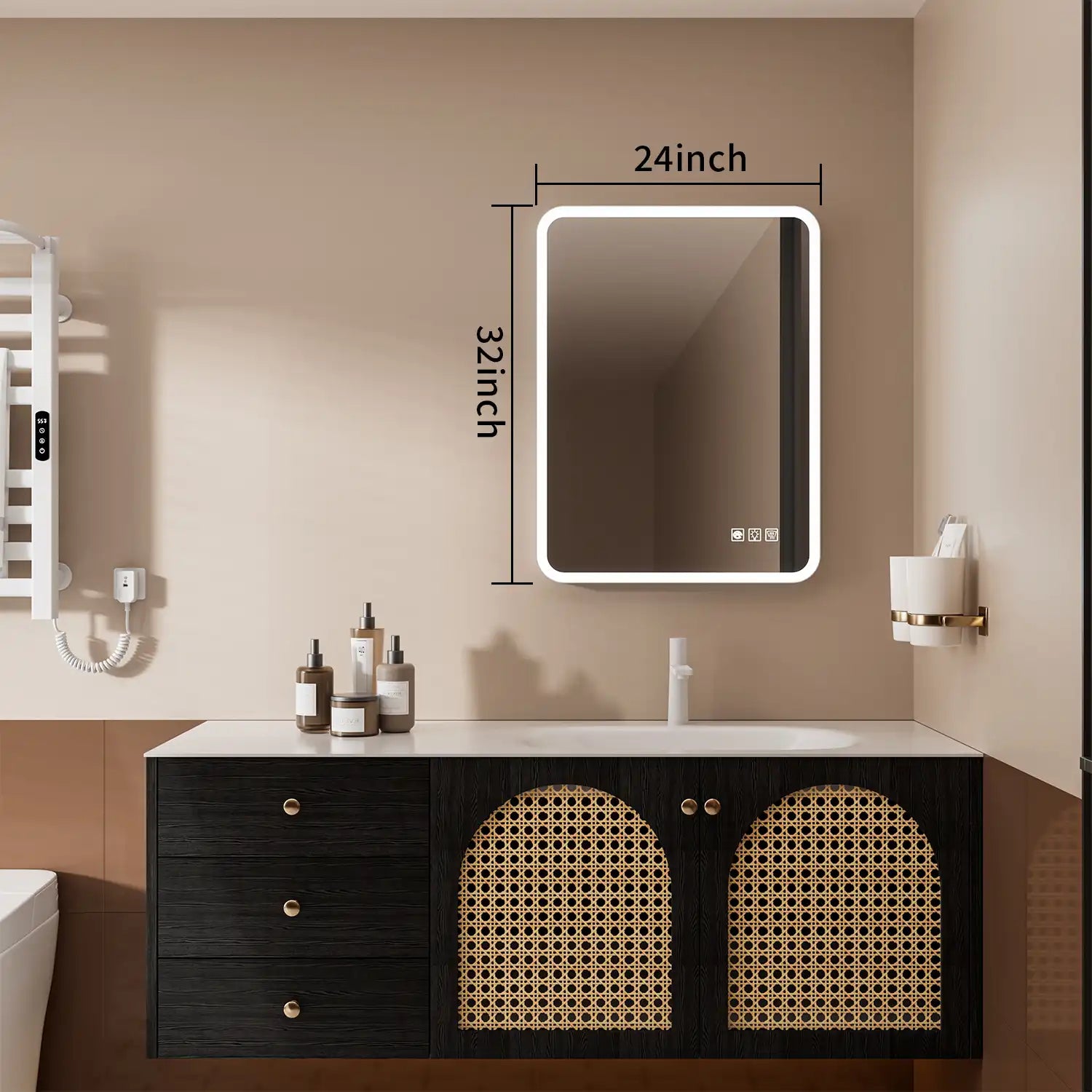
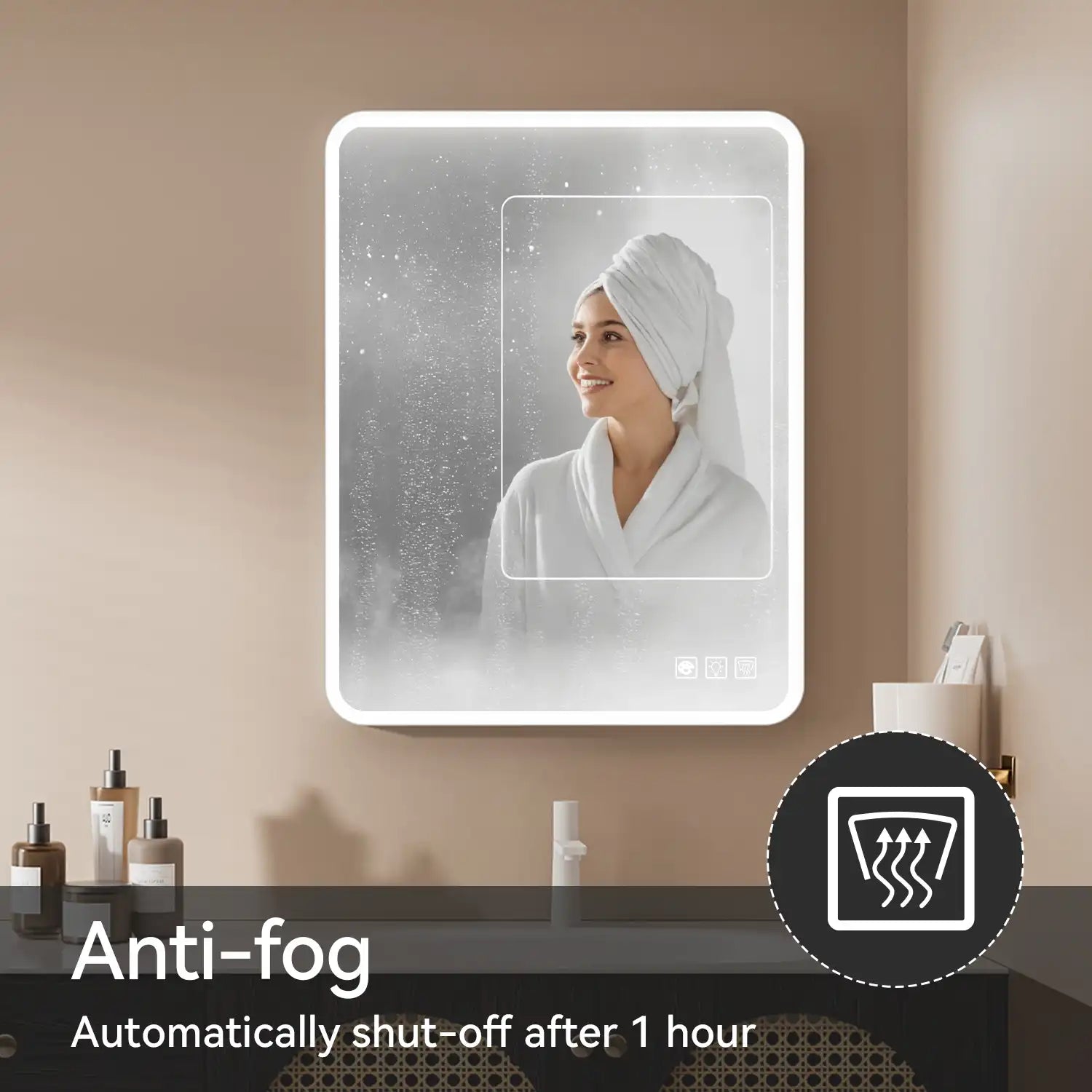


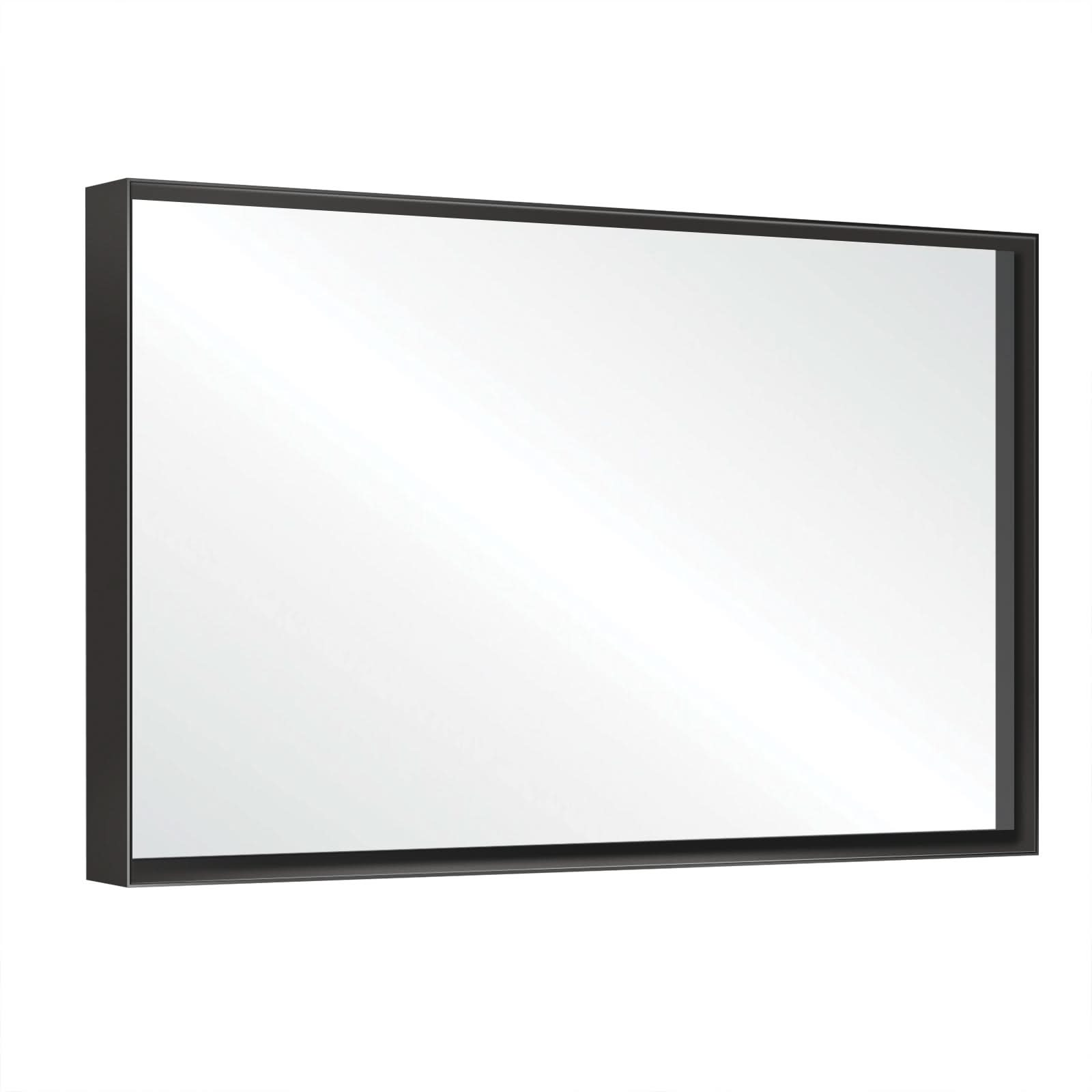
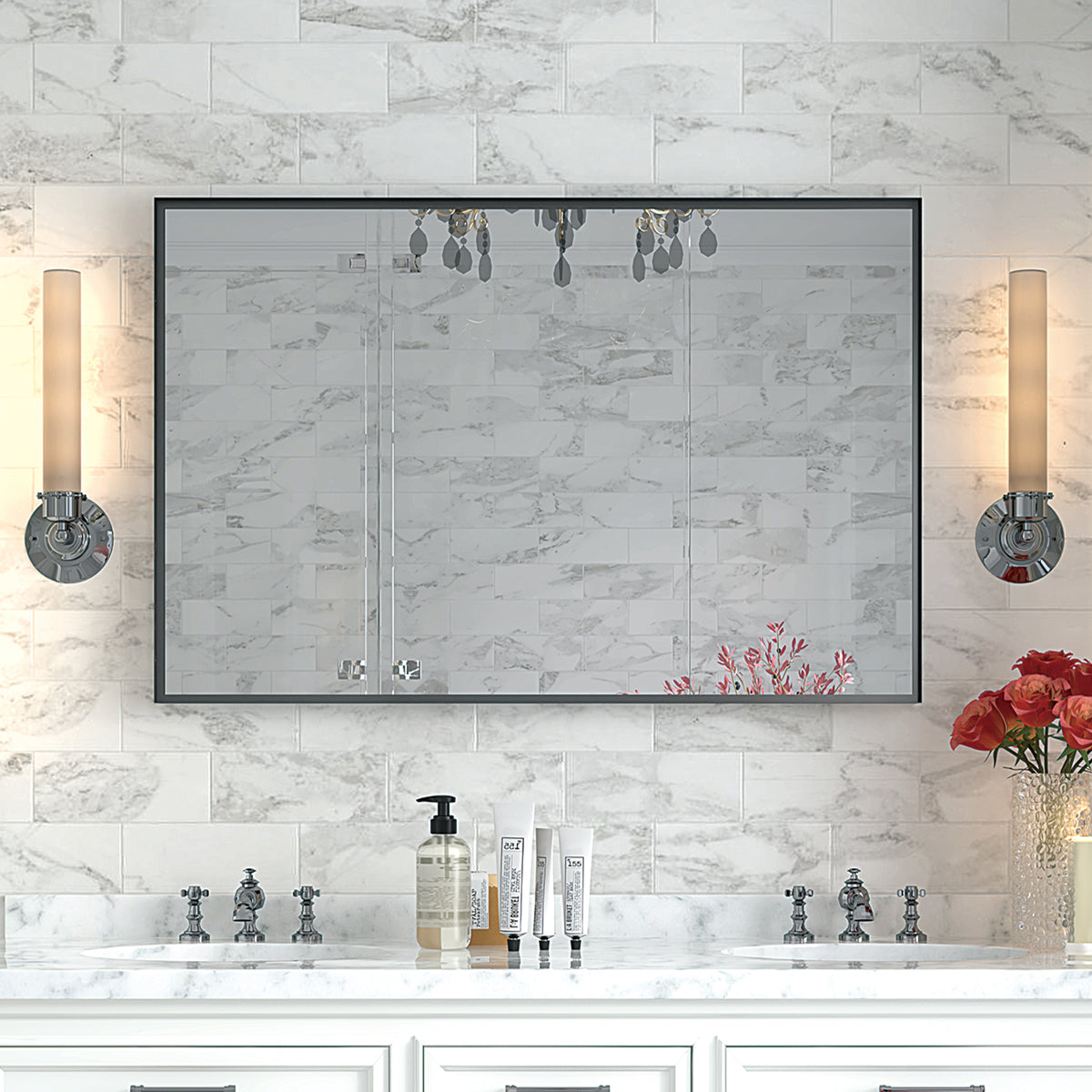



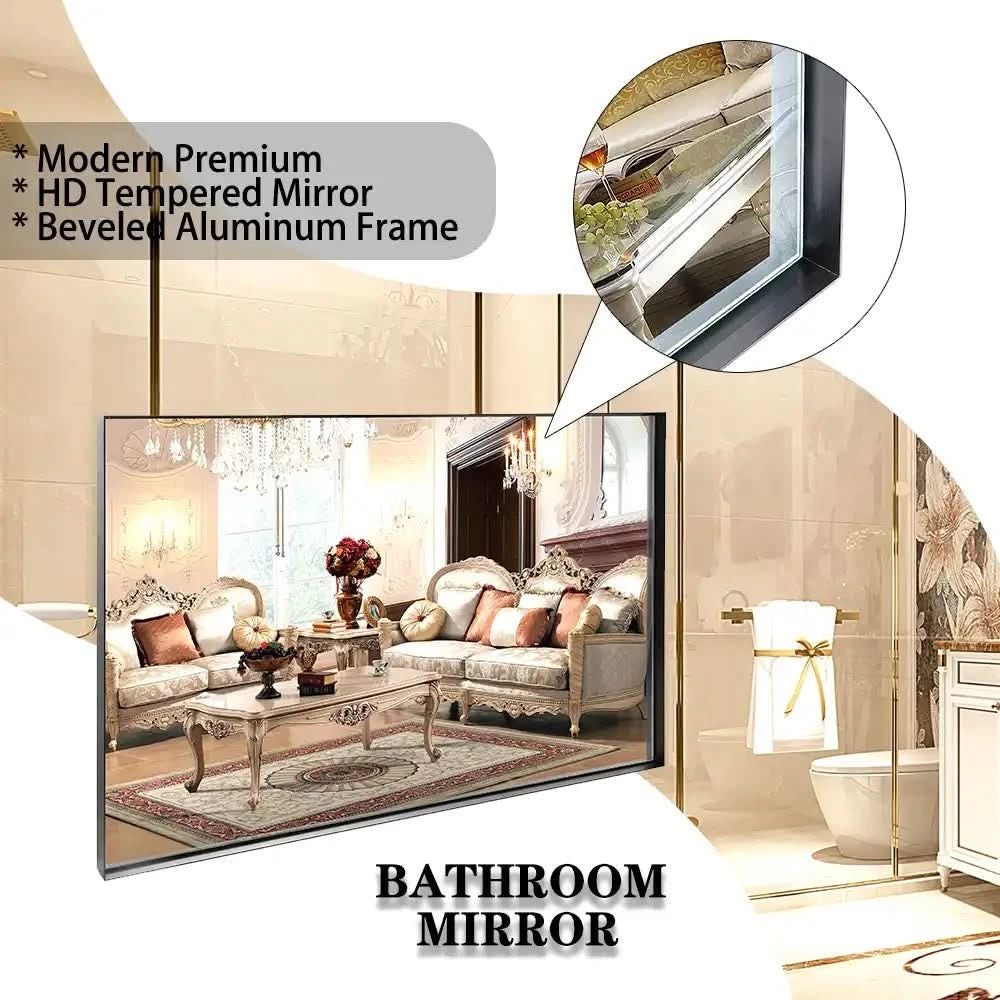

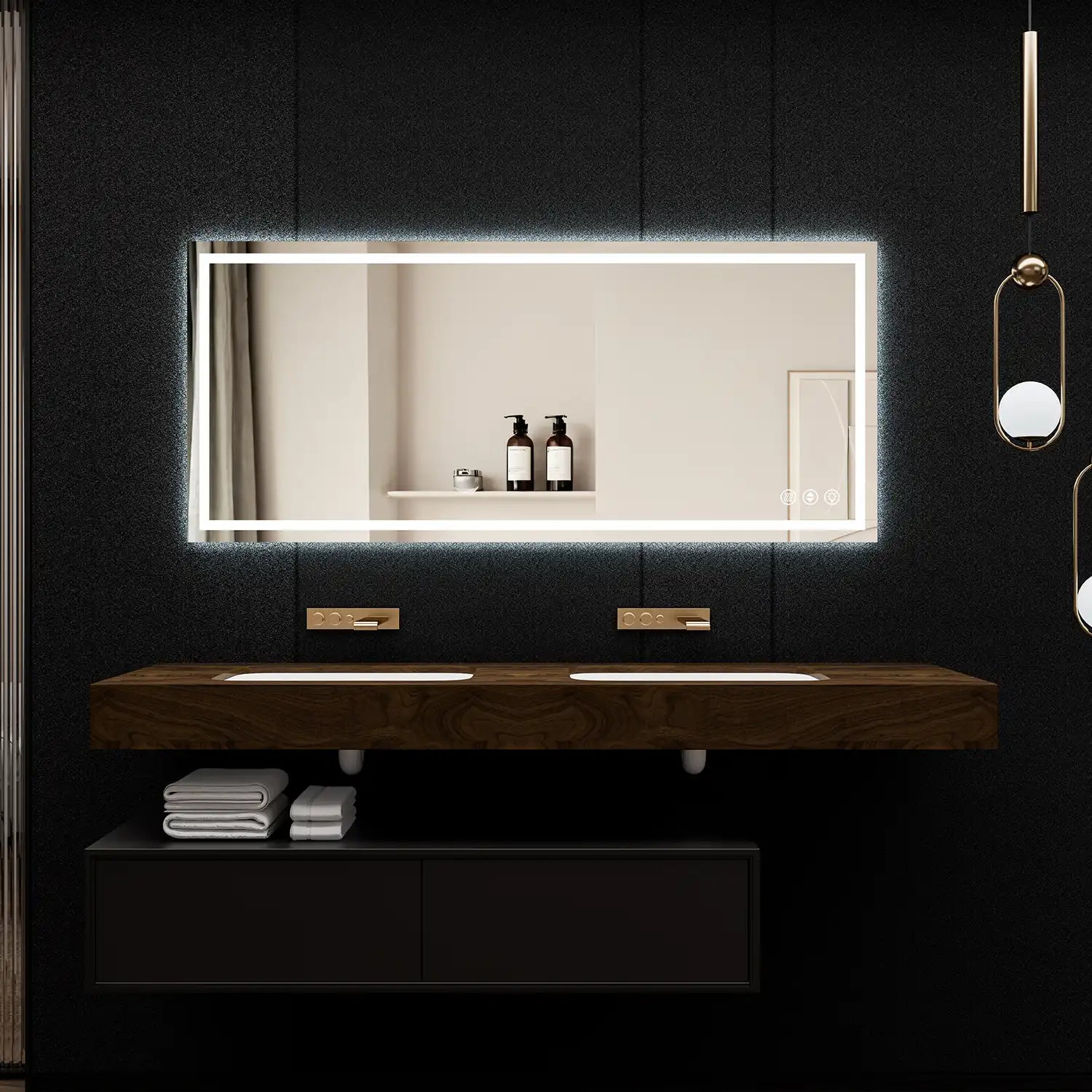
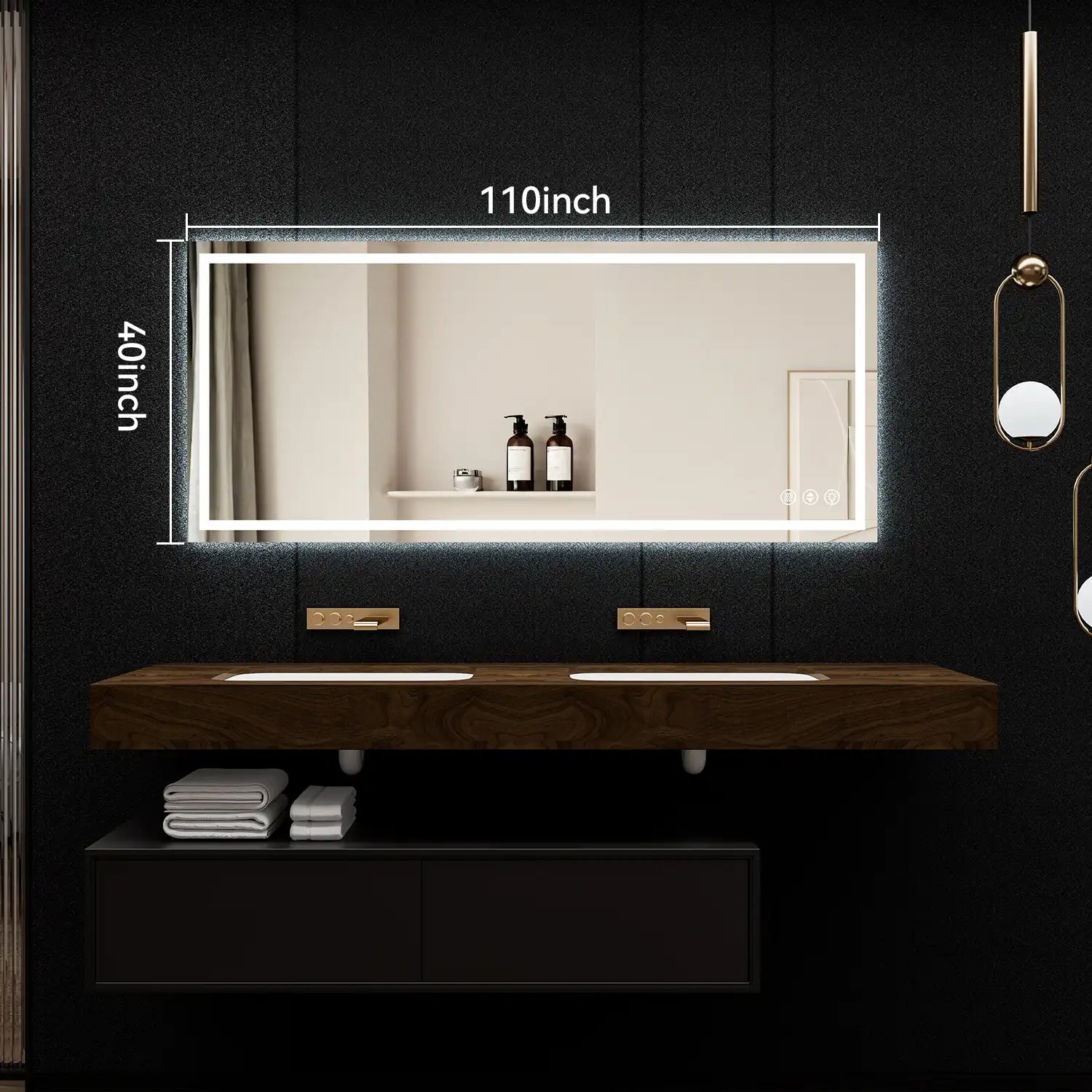
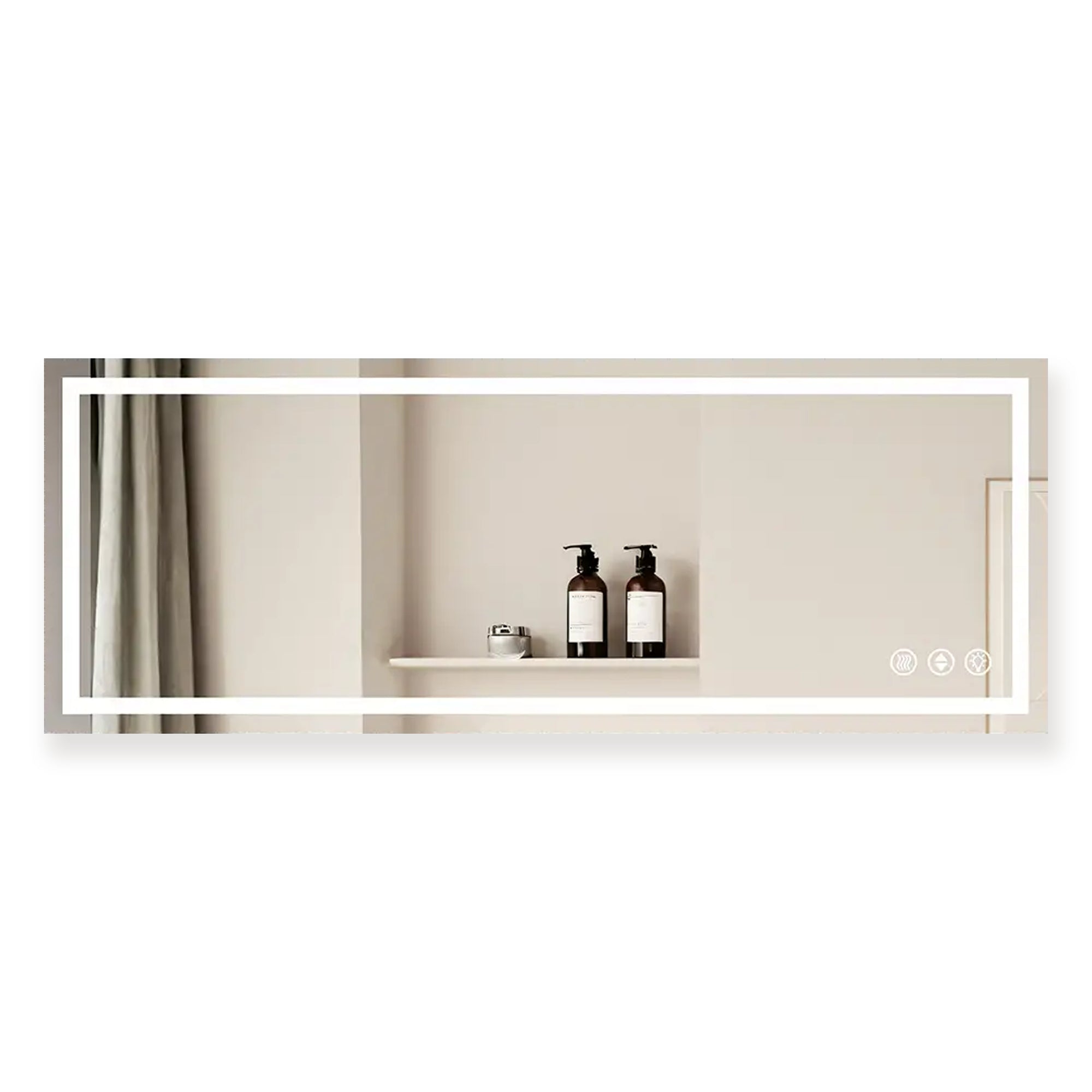
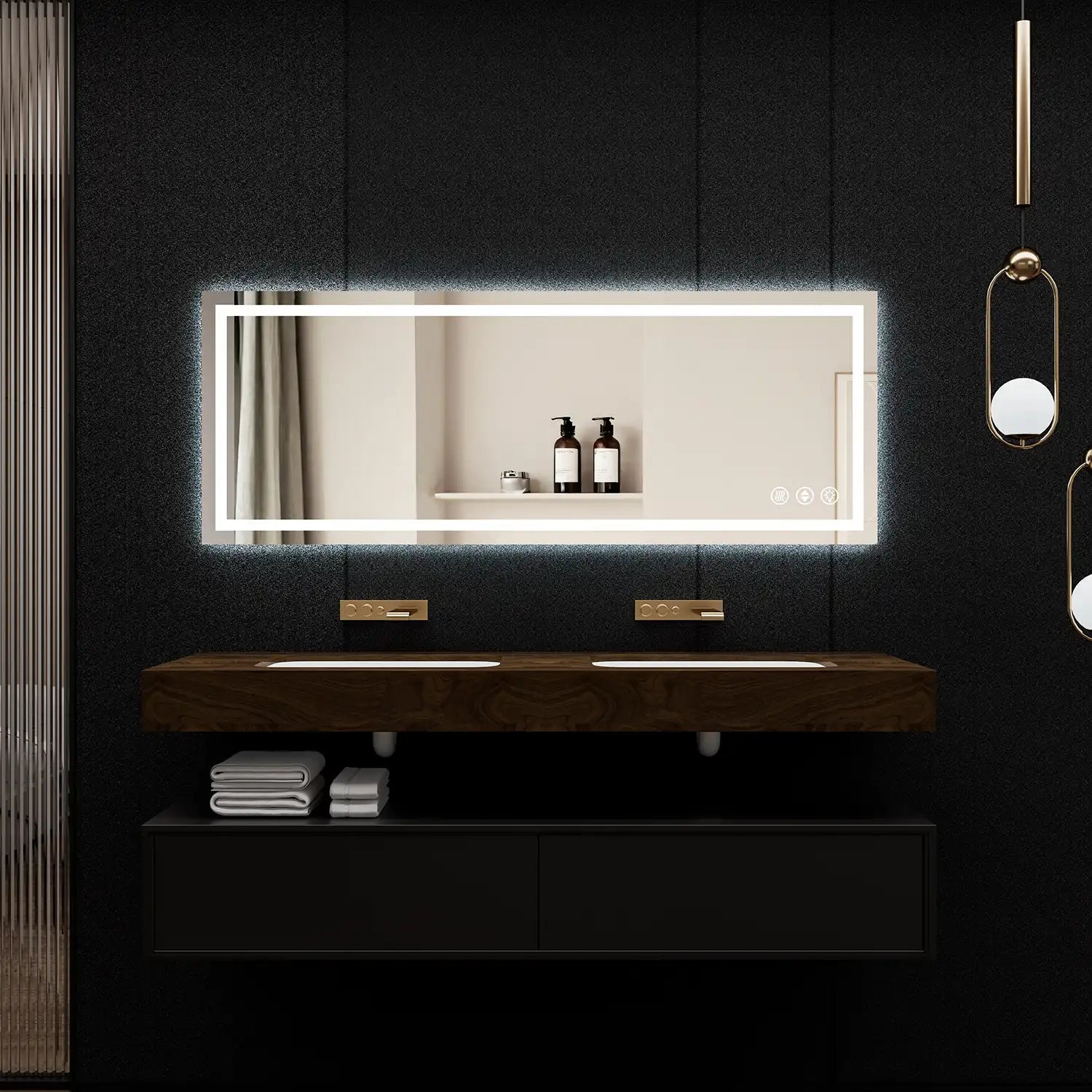

Comment
Will someone please make me understand the concept of a LED mirror size over a bathroom vanity that is 72" wide.
Some sites state that the mirror should be 70-80% the size of the vanity and other sites state that a 72" vanity should have a mirror 66-68 inches wide.
My confusion is that 70% of a 72" vanity = 50.4
80% of a 72" vanity = 57.6
That contradicts most of the sites saying the mirror needs to be 66-68 inches wide.
thank you
salena